Chapter 22C.065
LAKEWOOD NEIGHBORHOOD MASTER PLAN AREA – DESIGN STANDARDS
Article I. Purpose and Applicability
Article II. Residential Uses
22C.065.040 Site and building design standards.
22C.065.060 Single-family and duplex dwelling development standards.
22C.065.070 Community open space and recreation space required.
22C.065.080 Townhouse open space.
22C.065.090 Maintenance or dedication of open space.
22C.065.100 On-site recreation – Fee in lieu of open space.
22C.065.110 Storage space and collection points for recyclables.
22C.065.130 Street connectivity.
22C.065.140 Service areas and mechanical equipment.
22C.065.150 Nonconforming situations.
22C.065.160 Parking and loading.
22C.065.180 Landscaping and screening.
22C.065.190 Planned residential developments.
22C.065.200 Zero lot line development.
22C.065.210 Cottage housing developments.
Article III. Commercial, Mixed-Use and Public Institutional Uses
22C.065.220 Site and building design standards
22C.065.230 Commercial and mixed-use – Vehicular access and parking location.
22C.065.250 Nonresidential open space requirements.
22C.065.260 Residential open space and recreation space required.
22C.065.270 Townhouse open space.
22C.065.280 Maintenance or dedication of open space.
22C.065.290 On-site recreation – fee in lieu of open space.
22C.065.300 Service areas and mechanical equipment.
22C.065.320 Special limitations in the business and commercial zones.
22C.065.340 Street connectivity.
22C.065.350 Nonconforming situations.
22C.065.360 Parking and loading.
22C.065.380 Landscaping and screening.
Article IV. Decorative Street Lighting Standards
22C.065.390 Decorative street lighting standards.
Article I. Purpose and Applicability
22C.065.010 Purpose.
The purpose of this chapter is to apply the design standards and guidelines in the Lakewood neighborhood master plan, as adopted by Ordinance No. 3053, as legally required standards for all new construction in the Lakewood neighborhood master plan area (“MPA”). It is also the purpose of this chapter to:
(1) Encourage the realization and creation of a desirable and aesthetic environment in the Lakewood neighborhood MPA;
(2) Encourage and promote development which features amenities and excellence in site planning, streetscape, building design and contribution to community charm;
(3) Encourage creative approaches to the use of land and related physical developments;
(4) Provide clear objectives for those embarking on the planning and design of projects in the Lakewood neighborhood;
(5) Increase awareness of design considerations among the citizens of the Lakewood neighborhood; and
(6) Bring the range of uses together by individual site plans that will:
(a) Demonstrate how the elements of the site relate to the street front;
(b) Provide for compatibility with adjacent land uses;
(c) Provide protection or mitigation of natural features;
(d) Enhance street fronts and street corners;
(e) Promote public safety;
(f) Incorporate service areas and storm water facilities in a nonobtrusive manner; and
(g) Provide convenient pedestrian and vehicle circulation connecting on-site activities with adjacent pedestrian routes and streets. (Ord. 3265 § 3 (Exh. A), 2023).
22C.065.020 Applicability.
(1) Applicability.
(a) The design guidelines set forth in the Lakewood neighborhood master plan, as adopted by Ordinance No. 3053, shall apply to all new construction in the Lakewood neighborhood MPA, as depicted in Figure 1.
(b) The design guidelines shall be legally required standards, which shall be applied by the city to all development approvals and permits in the Lakewood neighborhood MPA.
(c) The following activities shall be exempt from these standards and guidelines:
(i) Construction activities which do not require a building permit;
(ii) Interior remodels of existing structures;
(iii) Modifications or additions to existing multifamily, commercial, industrial, office and public properties when the modification or addition:
(A) Constitutes less than 10 percent of the existing horizontal square footage of the use or structure; and
(B) Constitutes less than 10 percent of the existing building’s exterior facade.
(d) Where the standards in this chapter conflict with other standards outlined in MMC Title 22, Unified Development Code, the director shall determine which regulation applies based on which is more in the public interest and more consistent with the comprehensive plan.
(2) Interpreting and Applying the Design Standards.
(a) These standards capture the community visions and values as reflected in the comprehensive plan’s neighborhood planning areas. The city’s community development director retains full authority to determine whether a proposal meets these standards.
(b) Within these standards, certain words are used to indicate the relative importance and priority the city places upon a particular standard.
(i) The words “shall,” “must,” “will,” and “is/are required,” or words with their equivalent meaning, mean that the development proposal must comply with the standard unless the director finds that:
(A) The standard is not applicable in the particular instance; or
(B) The development proposal meets the intent of the standards in some other manner.
(ii) The word “should,” or words with its equivalent meaning, means that the development proposal will comply with the standard unless the director finds that:
(A) The standard is not applicable in the particular instance;
(B) The development proposal meets the intent of the standards in some other manner; or
(C) There is convincing evidence that applying the standard would not be in the public interest.
(iii) The words “is/are encouraged,” “can,” “consider,” “help,” and “allow,” or words with their equivalent meaning, mean that the action or characteristic is allowed and will usually be viewed as a positive element in the city’s review.
(c) The project proponent may submit proposals that he/she feels meet the intent of the standards but not necessarily the specifics of one or more standards. In this case, the director will determine if the intent of the standard has been met.(Ord. 3265 § 3 (Exh. A), 2023).
22C.065.030 Location.
The Lakewood neighborhood MPA encompasses planning area no. 11, as identified in Section 4, Land Use Element, of the Marysville Comprehensive Plan, and is generally bounded by the Burlington Northern Santa Fe railroad on the west, the city’s urban growth area boundary north of 172nd Street NE, Interstate 5 on the east, and 140th Street NE on the south. Near 172nd Street NE, the planning area extends across the railroad to include Lakewood schools. At the south tip of Lakewood, the area again extends west of the railroad, as identified in Figure 1:
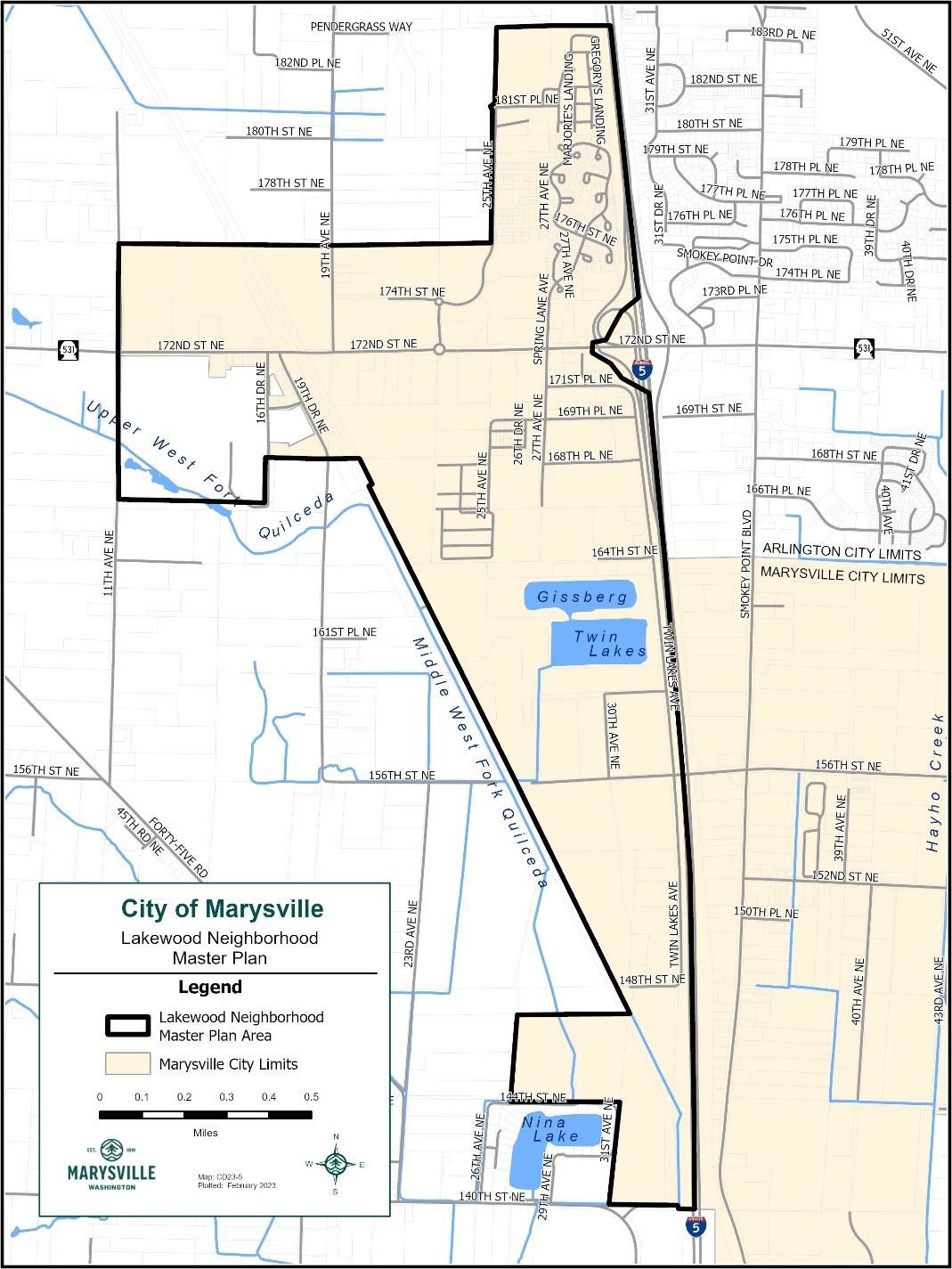
Figure 1 – Map of the Lakewood Neighborhood Master Plan Area
(Ord. 3265 § 3 (Exh. A), 2023).
Article II. Residential Standards and Design
22C.065.040 Site and building design standards.
(1) Applicability.
(a) Prior to submitting a building permit application, all development to which these standards apply shall be required to submit a site plan and elevations addressing the standards in this section for administrative review and approval by the community development director.
(b) The site and building design standards of this section apply to multifamily and townhome developments, whereas only subsections (2) and (4) of this section apply to single-family developments.
(2) Relationship of Buildings to Site and Street Front and Open Space.
(a) The site shall be oriented and designed to create an attractive street edge and accommodate pedestrian access. The following provisions apply:
(i) The street edge shall be defined with buildings, landscaping or other features.
(ii) Primary building entrance(s) shall face the street unless it is not feasible due to parcel size, topography, environmental conditions, or other factors as determined by the director, and alternate design elements are incorporated into the facade which enliven the streetscape. Alternatively, for multifamily projects, building entries that face onto a courtyard which is oriented towards the street are acceptable. Multifamily residential buildings that face common open space shall also provide a prominent building entry facing the street conforming to subsection (8) of this section.
(iii) Buildings with individual ground floor entries should face the street and/or common open space to the extent possible. Alternatively, for multifamily projects, configurations where entries face onto a courtyard or open space that is oriented to the street are acceptable.
(iv) Buildings shall provide windows that face the street to provide “eyes on the street” for safety. To meet this requirement, at least 15 percent of the facade facing the street shall be occupied by transparent windows or doors. See Figure 2.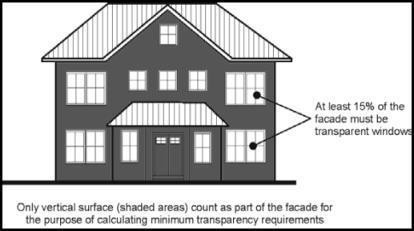
Figure 2 – Illustration of facade transparency requirements which enhance safety and the relationship to the street front
(v) Provide for a sidewalk at least five feet wide if there is not space in the public right-of-way.
(vi) Provide building entries that are accessed from the sidewalk. These pathways must be separated from parking and drive aisles and must not cross a parking lot.
(vii) Unless the building is immediately adjacent to the public ROW, the yard or open space between the street and the building front shall be landscaped. At least 20 percent of the landscaped area shall be trees and shrubs.
(viii) Private ground floor living spaces directly facing a public ROW and within 60 feet of the street shall be screened with planting (shrubs and trees) at least two feet high.
(b) The development shall create a well defined streetscape to allow for the safe movement of pedestrians.
(c) For multifamily residences, no more than 50 percent of the total public street front may be occupied by parking unless it is not feasible due to parcel size, topography, environmental conditions, or other facts as determined by the director. Where the property fronts on more than one public street, this provision applies to pedestrian-oriented streets. If none are designated, then only one street frontage. Parking lots shall not be located at the intersection of public streets.
(d) For properties facing 172nd Street NE, buildings shall be set back sufficiently to provide space for the public multi-use pathway, storm water management, landscaping, utilities, or other multi-use trails as determined by the director. Additionally, all residential buildings should be set back at least 20 feet from the public multi-use pathway and be landscaped with a mix of trees, shrubs, and ground cover. At least 50 percent of the landscaping must be trees and shrubs. The public trail should be distinguished from a semi-private yard with a short fence, hedge, or retaining wall (maximum four feet in height). The director may exempt the development from providing street trees if they are provided by the public improvement package.
(e) Relationship to Common Open Spaces or Designated Pedestrian Streets. The following applies to residential buildings facing common open spaces.
(i) For residences that do not have ground floor living spaces (e.g., that have a ground floor garage facing the park), there should be at least a five-foot planting strip along the base of the building with shrubs and small trees planted to form a continuous screen at least six feet tall (three years after planting) along the building facade. The residence must have upper story windows or a balcony facing the open space, and there must be no blank walls facing the open space on any floor, except the ground floor when screened with the plantings as noted above (see Figure 3).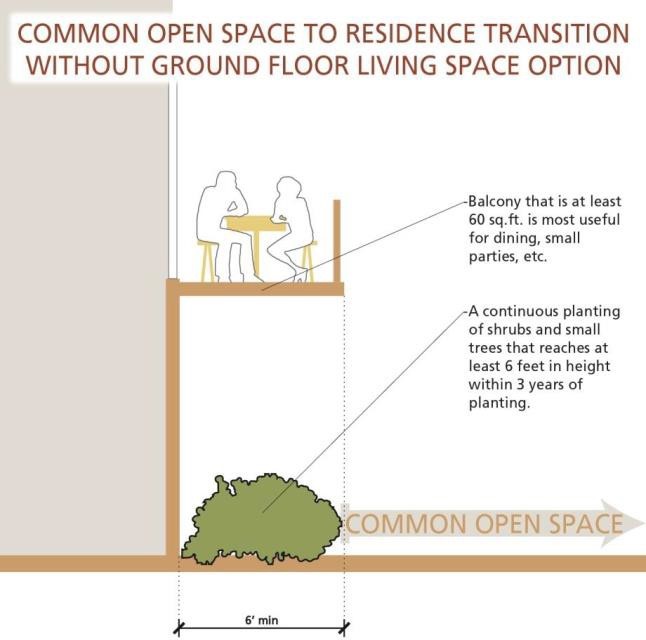
Figure 3 – Planting requirements for residences without a ground floor living space fronting a common open space
(ii) For residences with ground floor living spaces facing the open space, the building must feature at least one of the public/private space transition elements described below:
(A) Deck or Porch Option. Provide at least a 60-square-foot porch or deck raised at least one foot above grade. The porch or deck must be at least six feet wide, measured perpendicular to the house face. (The deck may be recessed into the house floor plan so that the deck extends out from the house less than six feet). A low fence, rail or planting, two feet to four feet high, is recommended. A porch roof or weather protection is optional. (See Figure 4).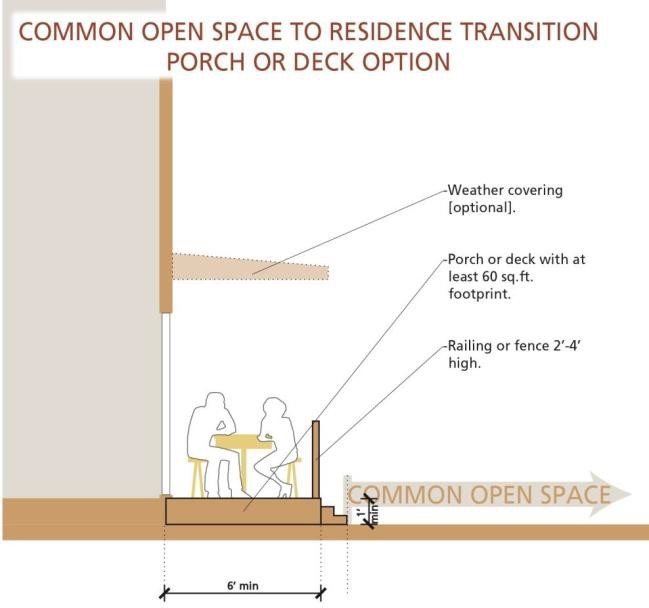
Figure 4 – Deck or porch option for residence/common open space transition
(B) Private Open Space Option. Provide at least a 10-foot-wide private open space along the face of the residence. The space may be paved or landscaped but must be delineated with a fence or planting two to four feet high. (See Figure 5).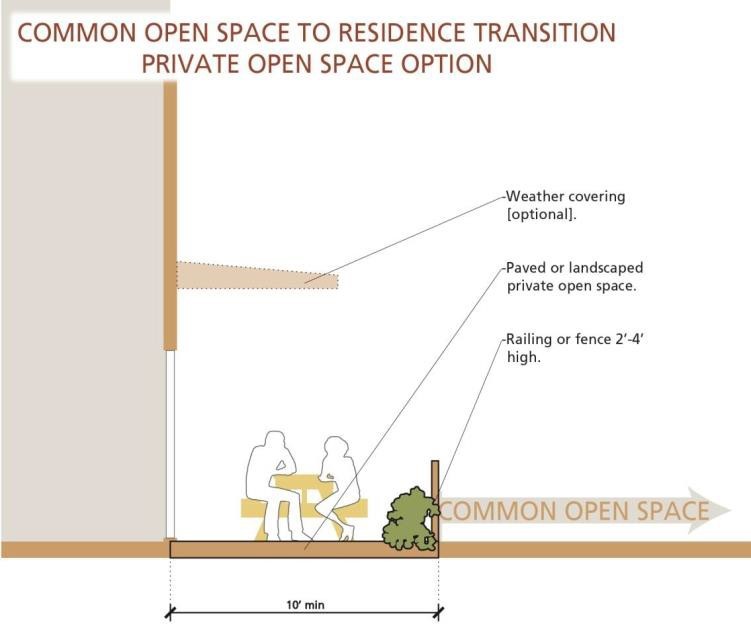
Figure 5 – Private open space option for residence/common open space transition
(C) Landscaped Area. Provide a landscaped area at least eight feet wide along the face of the building. The plantings must reach three feet high within three years after planting.
(D) Raised Ground Floor. If the residence’s ground floor is at least three feet above the grade adjacent to the building, then the landscaped area in subsection (2)(e)(ii)(C) of this section, may be reduced to four feet wide.
(E) Other transition design measure that adequately protects the privacy and comfort of the residential unit and the attractiveness and usefulness of the common open space at least as effectively as subsections (2)(e)(ii)(A) through (2)(e)(ii)(D) of this section, as determined by the city.
(F) A combination of the options described above; e.g., the residence could feature a smaller deck plus some additional private open space.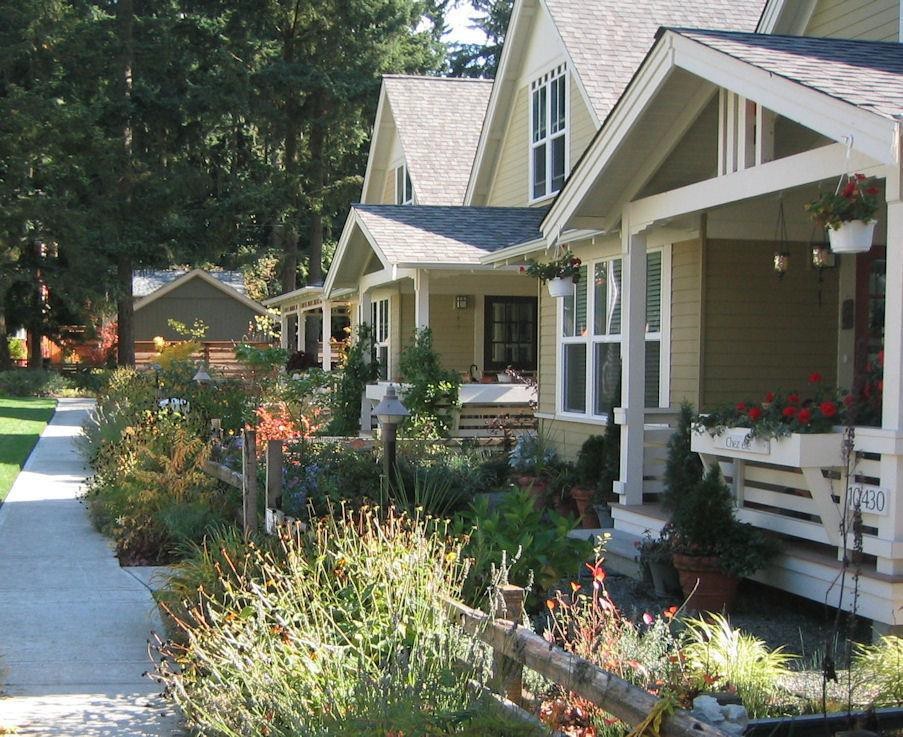
Figure 6 – Note how the porches and the landscaping elements provide a graceful and inviting entrance transition from the public space to the private realm
(3) Relationship of Buildings and Site to Adjoining Area.
(a) Where adjacent buildings and neighborhoods are consistent with the comprehensive plan and desired community character, new buildings and structures should achieve the visual continuity between the proposed and existing development building setbacks, placement of structures, location of pedestrian/vehicular facilities and spacing from adjoining buildings.
(b) Solar access of the subject and adjacent properties should be considered in building design and location.
(c) Attractive landscape transition to adjoining properties shall be provided.
(d) Public and quasi-public buildings and structures shall be consistent with the established neighborhood character.
(4) Landscape and Site Treatment.
(a) Parking lot screening and interior landscaping shall be provided consistent with Chapter 22C.120 MMC. The following criteria shall guide review of plans and administration of the landscaping standards in the zoning code:
(i) The landscape plan shall demonstrate visual screening from parking areas.
(ii) The landscape plan shall provide some physical separation between vehicular and pedestrian traffic.
(iii) Where feasible, the landscape plan shall integrate natural approaches to storm water management, including featured low impact development techniques.
(iv) In locations where plants will be susceptible to injury by pedestrian or motor traffic, they shall be protected by appropriate curbs, tree guards or other devices.
(v) Screening of outdoor service yards and other places which tend to be unsightly shall be accomplished by use of walls, fencing, planting, berms or combinations of these.
(vi) Landscaping should be designed to create definition between public and private spaces.
(vii) Where feasible, the landscape plan shall coordinate the selection of plant material to provide a succession of blooms, seasonal color, and a variety of textures.
(viii) The landscape plan shall provide a transition in landscaping design between adjacent sites, within a site, and from native vegetation areas in order to achieve greater continuity.
(ix) The landscape plan shall use plantings to highlight significant site features and to define the function of the site, including parking, circulation, entries, and open spaces.
(b) Street Landscaping. Where the site plan includes streetscape plantings, the following guidelines apply:
(i) Sidewalks and pathways should be separated from the roadway by planting strips with street trees wherever possible. Street trees, at least two-inch caliper, with spacing averaging no more than 30 feet on center, shall be provided, species as approved by the director.
(ii) Planting strips should generally be at least five feet in width. Evergreen shrubs should be no more than four feet in height and/or ground cover in accordance with the city of Marysville landscape standards (Chapter 22C.120 MMC) and Marysville administrative landscaping guidelines.
(iii) Street trees placed in tree grates may be more desirable than planting strips in pedestrian areas where space is limited.
(iv) Use of trees and other plantings with special qualities (e.g., spring flowers and/or good fall color) are strongly encouraged.
(c) Exterior lighting shall be part of the architectural concept. Lighting shall enhance the building design and adjoining landscaping. Appropriate lighting levels shall be provided in all areas used by pedestrians or automobiles, including building entries, walkways, parking areas, circulation areas, and other open space areas, in order to ensure safety and security; enhance and encourage evening activities; and provide a distinctive character to the area. New developments shall provide a lighting site plan which identifies lighting equipment, locations and standards, and implements the following design standards:
(i) All publicly accessible areas shall be lighted with average minimum and maximum levels as follows:
(A) Minimum (for low or nonpedestrian and vehicular traffic areas) of one-half foot candle;
(B) Moderate (for moderate or high volume pedestrian areas) of one to two foot candles; and
(C) Maximum (for high volume pedestrian areas and building entries) of four foot candles.
(ii) Lighting shall be provided at consistent levels, with gradual transitions between maximum and minimum levels of lighting and between lit areas and unlit areas. Highly contrasting pools of light and dark areas shall be avoided.
(iii) Parking lot lighting shall be subject to the provisions set forth in MMC 22C.130.050(3)(d).
(iv) Pedestrian-scale lighting (light fixtures no taller than 15 feet) is encouraged in areas with high anticipated pedestrian activity. All fixtures over 15 feet in height shall be fitted with a full cut-off shield, be dark sky rated, and mounted no more than 25 feet above the ground with lower fixtures preferable so as to maintain a human scale. Lighting shall enable pedestrians to identify a face 45 feet away in order to promote safety.
(v) Light levels at the property line should not exceed 0.1 foot candles (fc) adjacent to business properties, and 0.05 foot candles adjacent to residential properties. All building lights shall be directed onto the building itself and/or the ground immediately adjacent to it. The light emissions should not be visible above the roofline of the building. Light fixtures other than traditional cobra heads are encouraged.
(vi) Limited uplighting on trees and provisions for seasonal lighting are acceptable.
(vii) Limited accent lighting on architectural and landscape features is encouraged to add interest and focal points.
(5) Site Design Utilizing Crime Prevention Through Environmental Design (CPTED) Principles. Development that is subject to this section shall incorporate the following CPTED strategies into building design and site layout:
(a) Access Control. Guidance of people coming and going from a building or site by placement of real and perceived barriers. Provision of natural access control limits access and increases natural surveillance to restrict criminal intrusion, especially into areas that are not readily observable.
(b) Surveillance. Placement of features, uses, activities, and people to maximize visibility. Provision of natural surveillance helps to create environments where there is plenty of opportunity for people engaged in their normal behavior to observe the space around them.
(c) Territoriality/Ownership. Delineation of private space from semi-public and public spaces that creates a sense of ownership. Techniques that reduce the perception of areas as “ownerless” and therefore available for undesirable uses.
(d) Examples of ways in which a proposal can comply with CPTED principles are outlined in the CPTED guidelines for project design and review, prepared by the city.
(6) Building Design – Human-Scale Standards. The human-scale standards are intended to encourage the use of building components that relate to the size of the human body, and to add visual interest to buildings. “Human scale” addresses the relationship between a building and the human body. Generally, buildings attain a good human scale when they feature elements or characteristics that are sized to fit human activities, such as doors, porches, and balconies. A minimum of four of the following human-scale building elements shall be incorporated into the new development:
(a) Balconies or decks in upper stories, at least one balcony or deck per upper floor on the facades facing streets, provided they are integrated into the architecture of the building;
(b) Bay windows or other window treatments that extend out from the building face;
(c) At least 150 square feet of pedestrian-oriented space for each 100 lineal feet of building facade;
(d) Individual windows, generally less than 16 square feet per pane and separated from the windows by at least a six-inch molding;
(e) Porches of at least 100 square feet in area;
(f) Spatially defining building elements, such as a trellis, overhang, canopy, or other element, that define space that can be occupied by people;
(g) Upper story setbacks, provided one or more of the upper stories are set back from the face of the building at least six feet;
(h) Smaller building elements near the entry of pedestrian-oriented street fronts of large buildings;
(i) Landscaping components that meet the intent of these standards; and/or
(j) The director may consider other methods to provide human-scale elements not specifically listed here. The proposed methods must satisfy the intent of these standards.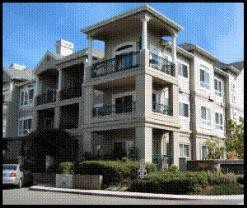
Figure 7 – An example of balconies that have been integrated into the architecture of the building
(7) Building Design – Architectural Scale. The architectural scale standards are intended to encourage compatibility of structures with nearby structures, to help the building fit in with its context, and to add visual interest to buildings.
(a) Vertical Facade Modulation. All new residential buildings shall provide modulation (measured and proportioned inflection or setback in a building’s facade) on facades facing a street, common open space, public area, or common parking area as follows:
(i) Buildings with facades that are 30 feet or longer shall provide vertical modulation of the exterior wall that extends through all floors; provided, that where horizontal modulation is used, different stories may be modulated at different depths.
(ii) The minimum modulation depth shall be three feet and the minimum modulation width for each modulation shall be 10 feet. On facades that are 100 feet or longer, the minimum depth of modulation shall be five feet and the minimum width for each modulation shall be 20 feet.
(iii) The minimum modulation depth identified in subsection (7)(a)(ii) of this section may be reduced to two feet if tied to a change in color or building materials, and/or roofline modulation as defined in subsection (7)(c) of this section.
(iv) The director may consider departures from these standards, provided the proposed treatment meets or exceeds the intent of these standards.
(b) Facade Articulation. All new residential buildings shall include three of the following articulation features at intervals of no more than 30 feet along all facades facing a street, common open space, public area, and common parking areas:
(i) Repeating distinctive window patterns at intervals of no more than 30 feet (see Figure 8 below for an example).
(ii) Horizontal modulation (upper level step-backs, see Figure 9). To qualify for this measure, the minimum horizontal modulation shall be five feet.
(iii) Balconies that are recessed or projected from the facade at least 18 inches and integrated with the building’s architecture as determined by the director.
(iv) Change of building materials.
(v) Articulation of the building’s top, middle, and bottom. This typically includes a distinctive ground floor or lower floor design, consistent articulation of middle floors, and a distinctive roofline (see Figures 8 and 9).
(c) Roofline Modulation. Roofline modulation can be used in order to articulate the structure.
(i) In order to qualify as an articulation element in subsection (7)(b) of this section or in this subsection, the roofline shall meet the following modulation requirement:
(A) For flat roofs or facades with horizontal eaves, fascia, or parapet, the minimum vertical dimension of roofline modulation is the greater of two feet or 0.1 multiplied by the wall height (finish grade to top of the wall) when combined with vertical building modulation techniques described in subsection (7)(a) of this section. Otherwise, the minimum vertical dimension of roofline modulation is the greater of four feet or 0.2 multiplied by the wall height.
(B) Buildings with pitched roofs must include a minimum slope of 5:12 and feature modulated roofline components at the interval required per the applicable standard above.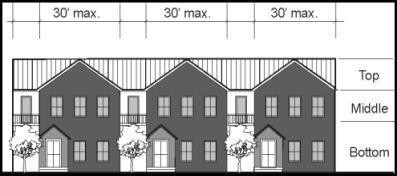
Figure 8 – Note the repeating distinct window patterns and the articulation of the building’s top, middle and bottom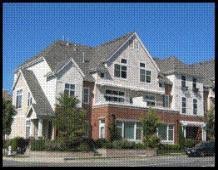
Figure 9 – An example of articulating a building’s top, middle, and bottom by utilizing brick on the ground floor, defined window patterns and articulation treatments on upper floors, and a distinctive roofline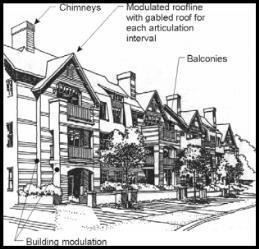
Figure 10 – Example of good articulation for a multifamily building
(8) Building Design – Entrances. The intent of the building entrances standards is to ensure that buildings are inviting and accessible, and to encourage pedestrian activity. The principal building entrances of all buildings shall feature the following improvements, unless the director determines an alternate technique better addresses the intent of these standards:
(a) Weather cover (e.g., porch or canopy) that is at least four feet deep and at least 32 square feet in footprint measured horizontally must be provided for the primary entrance(s) to residential units. Figures 11 and 12 demonstrate this requirement.
(b) Access to Residential Units. Ground floor residential units facing a street or common open space shall be directly accessible from the applicable street or open space.
(c) Townhouse Entrances. Townhouse and all other multifamily dwelling units with private exterior ground floor entries shall provide at least 20 square feet of landscaping adjacent to the entry. This is particularly important for units where the primary entrance is next to private garages off an interior access road. Such landscaping areas soften the appearance of the building and highlight individual entries. See Figure 12 for an example of what is desired and Figure 13 for an example of what is unacceptable.
.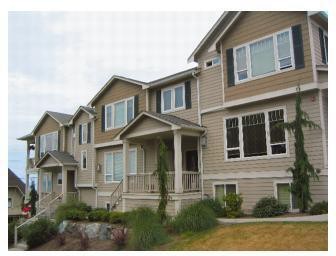
Figure 11 – Weather protection that articulates the front facade is provided
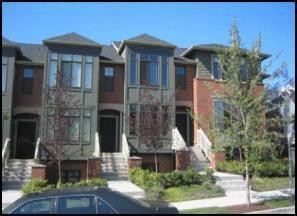
Figure 12 – Ground floor residential units directly accessible to the street with landscaping defining the entry
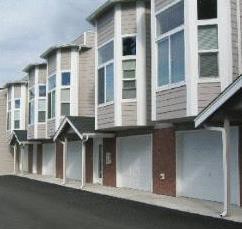
Figure 13 – An example of unacceptable townhouse design where there is no landscaping adjacent to the entries
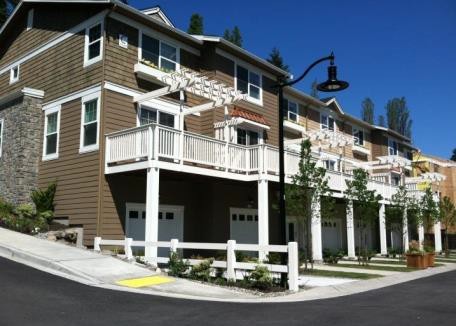
Figure 14 – An example of acceptable townhouse design
(9) Building Design – Details. The building design details standards are intended to ensure that buildings have design interest at all observable distances and to enhance the architecture of multifamily buildings. At closer distances, the most important aspects of a building are its design details, texture of materials, quality of its finishes, and small, decorative elements. Multifamily building facades shall incorporate five architectural details, except that if the option in subsection (9)(e) of this section is used, only four architectural details are required. Chosen details shall be compatible with the chosen architectural character of the building. Detail options include:
(a) Distinctive porch design with unique design and use of materials.
(b) Distinctive windows and doors with molding/framing details that go beyond the requirements of subsection (10) of this section.
(c) Landscaped trellises or other decorative element that incorporates landscaping near the building entry or entries.
(d) Light fixtures with a diffuse visible light source, such as a non-glare globe or “acorn,” or a decorative shade or mounting for each building entry on the facade.
(e) Brick or stonework covering more than 10 percent of the facade.
(f) Building materials that add visual interest, including:
(i) Individualized patterns or continuous wood details.
(ii) Decorative moldings, brackets, wave trim or lattice work.
(iii) Decorative brick or stonework (may be in addition to the brick or stonework credits noted above if they are arranged in a decorative manner that adds visual interest to the facade).
(iv) Other materials with decorative or textural qualities as approved by the director. The applicant must submit architectural drawings and material samples for approval.
(g) Varied roofline design, including multiple gables and/or dormers or other design that adds distinct visual interest.
(h) Distinctive railings, grill work, or terraced landscape beds integrated along the facade of the building.
(i) Unique balcony design, such as a distinctive geometry and configuration.
(j) Other details that meet the intent of the standards as approved by the director.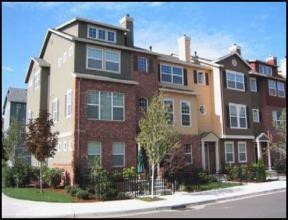
Figure 15 – This building uses brick for more than 10 percent of the facade, a decorative mix of materials and colors, decorative entries, and decorative windows to add visual interest
(10) Window Design for Residential Uses. Building facades shall employ techniques to recess or project individual windows above the ground floor at least two inches from the facade, or incorporate window trim at least four inches in width that features color that contrasts with the base building color. Exceptions will be considered by the director where buildings employ other distinctive windows or facade treatments that add visual interest to the building.
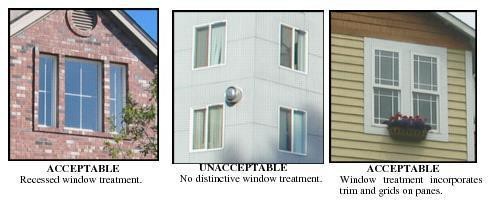
Figure 16 – Acceptable and unacceptable window treatments
(11) Building Materials. The building materials standards are intended to encourage the use of a variety of high-quality, durable materials that will enhance the visual image of the city; provide visual interest and distinct design qualities; and promote compatibility and improvement within surrounding neighborhoods through effective architectural detailing and the use of traditional building techniques and materials. The following standards apply:
(a) Building exteriors shall be constructed from high-quality, durable materials. Building materials such as masonry, stone, lap-siding and wood are encouraged.
(b) The following materials are prohibited in visible locations unless an exception is granted by the director based on the integration of the material into the overall design of the structure:
(i) Plywood siding (including T-111 or similar plywood). Board and batten is an exception.
(ii) Corrugated fiberglass.
(iii) Noncorrugated and highly reflective sheet metal.
(iv) Chain link fencing; provided, that the director may approve chain link fencing when it is integrated into the overall site design (chain link fencing is also allowed for temporary purposes such as a construction site, or as a gate for a refuse enclosure).
(c) If used, metal siding and concrete block shall conform to the standards in the commercial and mixed use standards outlined in MMC 22C.065.220(10).
(d) If used, sheet materials and residential siding used for building extensions shall be of the highest quality, as approved by the director.
(e) All exterior materials are subject to approval by the director. Submit material samples to the director for approval.
(12) Blank Walls. The blank wall standards are intended to: reduce the visual impact of large, undifferentiated walls; reduce the apparent size of large walls through the use of various architectural and landscaping treatments; enhance the character and identity of the city; and ensure that all visible sides of buildings provide visual interest. Blank walls visible from a public street, sidewalk, trail, interior pathway, or parking lot are prohibited.
(a) A wall (including building facades and other exterior building walls, retaining walls, and fences) is defined as a blank wall if:
(i) A ground floor wall or portion of a ground floor wall over four feet in height has a horizontal length greater than 15 feet and does not include a transparent window or door; or
(ii) Any portion of a ground floor wall having a surface area of 400 square feet or greater does not include a transparent window or door.
(b) All blank walls visible from a public street, sidewalk, trail, interior pathway, or parking lot shall be treated in one or more of the following measures:
(i) Incorporate transparent windows or doors;
(ii) Install a vertical trellis in front of the wall with climbing vines or plant materials sufficient to obscure or screen at least 60 percent of the wall’s surface within three years. For large blank wall areas, the trellis must be used in conjunction with other treatments described below;
(iii) Provide a landscaped planting bed at least five feet wide, or a raised planter bed at least two feet high and three feet wide in front of the wall. Plant materials must be able to obscure or screen at least 60 percent of the wall’s surface within three years;
(iv) Provide artwork (mosaic, mural, sculpture, relief, etc.) over at least 50 percent of the blank wall surface; and/or
(v) Other method as approved by the director. For example, landscaping or other treatments may not be necessary on a wall that employs high-quality building materials (such as brick) and provides desirable visual interest.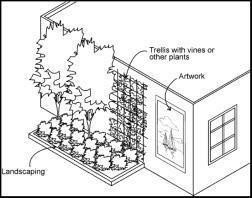
Figure 17 – Blank wall treatments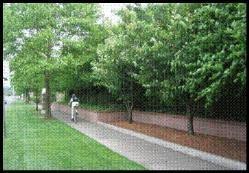
Figure 18 – Terraced planting beds effectively screen a large blank wall
(13) Pedestrian Circulation. All multifamily and mixed-use development shall provide a network of pedestrian pathways that connect all residences to sidewalks, in accordance with the following design standards:
(a) For safety and access, landscaping shall not block visibility to and from a path, especially where it approaches a roadway or driveway.
(b) Pedestrian walks shall be separated from structures at least three feet by landscaping. The director may consider other treatments to provide attractive pathways. Examples include sculptural, mosaic, bas-relief artwork, or other decorative treatments that meet the guidelines’ intent. (Figure 17 provides one example.)
(c) Where the walkway is adjacent to ground level dwellings with windows facing the path, provide at least 15 feet of separation between the window and the path.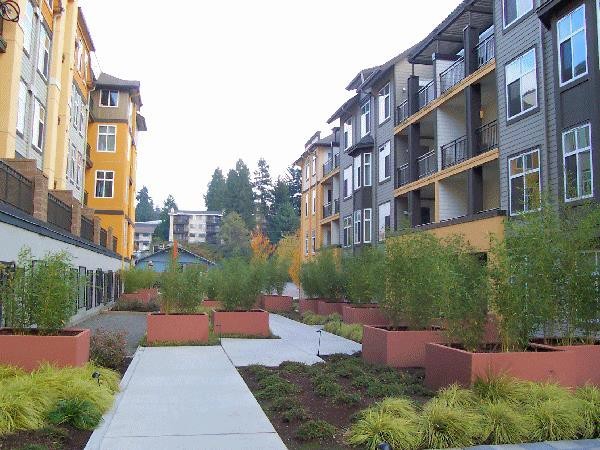
Figure 19 – An example of an attractive pedestrian connection through a multifamily development
(Ord. 3265 § 3 (Exh. A), 2023).
22C.065.050 Multiple-family, townhomes, and group residences – Vehicular access and parking location.
Multiple-family, townhomes, and group residences shall be subject to the vehicular access and parking standards set forth in MMC 22C.010.300. (Ord. 3265 § 3 (Exh. A), 2023).
22C.065.060 Single-family and duplex dwelling development standards.
The provisions of this section apply to building permits for single-family dwellings and single-family dwellings when multiple single-family dwellings are on a single lot, excluding accessory dwelling units; review will be done through the building permit process.
(1) It is the intent of these development standards that single-family dwellings be compatible with neighboring properties, friendly to the streetscape, and in scale with the lots upon which they are to be constructed. The director is authorized to promulgate guidelines, graphic representations, and examples of housing designs and methods of construction that do or do not satisfy the intent of these standards.
(2) All residential development shall be designed to front onto streets. Configurations where dwelling units and/or residential lots back up to any street are prohibited. For example, new subdivisions along a street could be configured so that lots fronting on the street feature alley access in the rear or other shared driveway access as approved by the city on the side of the lots. Lot configurations where side yards face the street are acceptable.
(3) Entry. Where lots front on a public street, the house shall have doors and windows which face the street. Houses must have a distinct entry feature such as a porch or weather-covered entryway with an entry feature that is at least 60 square feet with no dimension less than six feet. Where lots front on a common open space or pathway, the requirements for orientation are the same as for a public street.
The director may approve a street orientation or entryway with dimensions different than specified herein; provided, the entry visually articulates the front facade of the dwelling so as to create a distinct entryway, meets setback requirements, provides weather cover, has a minimum dimension of four feet, and is attached to the home.
(4) Alleys.
(a) If the lot abuts an alley, the garage or off-street parking area shall take access from the alley, unless precluded by steep topography. No curb cuts shall be permitted unless access from the alley is precluded by steep topography.
(b) The minimum driveway length may be reduced to between six and zero feet for garages when the following conditions are met:
(i) An alley is provided for access;
(ii) At least one off-street parking space, in addition to any provided in the garage, is provided to serve that dwelling unit and the stall(s) is conveniently located for that particular dwelling; and
(iii) The applicable total parking stall requirement is met.
(c) The rear yard setback may be reduced to zero feet to accommodate the garage.
(d) If the garage does not extend to the property line or alley, the dwelling unit above the garage may be extended to the property line or alley.
(e) Dwellings with a wall facing an alley must provide at least one window facing the alley to allow observation of the alley.
(5) Auto Courts.
(a) Auto courts are only allowed in a PRD.
(b) Auto courts provide ingress and egress to a cluster of no more than six dwellings and access from a nonarterial street. Auto court design must be consistent with the city’s design guidelines for auto courts.
(c) Auto courts shall be no less than 20 feet in width; provided, that if emergency services access is required, the driving surface dimensions will comply with emergency vehicle access requirements.
(d) Auto courts shall be no greater than 150 feet in length, unless acceptable emergency vehicle turnaround is provided and designed so vehicles will not back onto public streets.
(e) Driveway length may be reduced to between three feet and six feet for garages when at least two parking spaces are provided for the unit in addition to the garage. The additional parking must be conveniently located to the dwelling.
(6) Facade and Driveway Cuts. If there is no alley access and the lot fronts on a public or private street, living space equal to at least 50 percent of the garage facade shall be flush with or projected forward of the garage, and the dwelling shall have entry, window and/or roofline design treatment which emphasizes the house more than the garage. Where materials and/or methods such as modulation, articulation, or other architectural elements such as porches, dormers, gables, or varied roofline heights are utilized, the director or designee may waive or reduce the 50 percent standard. Driveway cuts shall be no more than 80 percent of the lot frontage; provided, that the director or designee may waive the 80 percent maximum if materials and/or methods to deemphasize the driveway, such as ribbon driveways, grasscrete surface, or accent paving, are utilized.
(7) Privacy. Dwellings should be situated to respect the privacy of abutting homes and to create usable yard space for the dwelling(s). Windows should be placed to protect privacy. The review authority shall have the discretion to establish setback requirements that are different than may otherwise be required in order to accomplish these objectives.
(8) Individual Identity. Home individuality shall be achieved by the following:
(a) Avoiding the appearance of a long row of homes by means such as angling houses, varied street setbacks, and varied architectural design features.
(b) Each dwelling unit shall have horizontal or vertical variation within each unit’s front building face and between the front building faces of all adjacent units/structures to provide visual diversity and individual identity to each unit. Upon building permit application, a plot plan of the entire structure shall be provided by the builder to show compliance with this requirement. The director or designee shall review and approve or deny the building design, which may incorporate variations in rooflines, setbacks between adjacent buildings, and other structural variations.
(c) The same building plans cannot be utilized on consecutive lots. “Flip-flopping” of plans is not permitted; provided, that upon demonstration to the director that the alteration of building facades would provide comparable visual diversity and individual identity to the dwelling units as different building plans, this provision shall not apply. Materials and/or methods which may be utilized to achieve visual diversity include, but are not limited to, use of differing siding material, building modulations and roofline variations.
(9) Landscaping. Landscaping of a size and type consistent with the development must be provided to enhance the streetscape. Landscaping will enhance privacy for dwellings on abutting lots and provide separation and buffering on easement access drives. Landscaping shall consist of two native trees per unit, planted in the front yard, which are at least one and one-half inches in caliper for deciduous or six feet in height for evergreen trees, plus a mixture of trees, shrubs and ground cover as appropriate to the site. All required landscaping shall be installed in accordance with the plans prior to issuance of an occupancy permit. Where applicable, street frontage landscaping shall comply with the city’s streetscape plan.
(10) Duplexes. Duplexes must be designed to architecturally blend with the surrounding single-family dwellings and not be readily discernible as a duplex but appear to be a single-family dwelling. (Ord. 3265 § 3 (Exh. A), 2023).
22C.065.070 Community open space and recreation space required.
On-site open space shall be provided for multifamily developments as outlined in MMC 22C.010.320. (Ord. 3265 § 3 (Exh. A), 2023).
22C.065.080 Townhouse open space.
Townhouse and other ground based multifamily shall provide open space as set forth in MMC 22C.010.330. (Ord. 3265 § 3 (Exh. A), 2023).
22C.065.090 Maintenance or dedication of open space.
Maintenance and dedication of open space standards are set forth in MMC 22C.010.340. (Ord. 3265 § 3 (Exh. A), 2023).
22C.065.100 On-site recreation – Fee in lieu of open space.
Provisions for the city to allow a payment in lieu of providing on-site open space or recreation space are set forth in MMC 22C.010.350. (Ord. 3265 § 3 (Exh. A), 2023).
22C.065.110 Storage space and collection points for recyclables.
Developments shall provide storage space for the collection of recyclables as set forth in 22C.010.370. (Ord. 3265 § 3 (Exh. A), 2023).
22C.065.120 Fences.
(1) Purpose. The fence standards promote the positive benefits of fences without negatively affecting the community or endangering public or vehicle safety. Fences can create a sense of privacy, protect children and pets, provide separation from busy streets, and enhance the appearance of property by providing attractive landscape materials. The negative effects of fences can include the creation of street walls that inhibit police and community surveillance, decrease the sense of community, hinder emergency access and the safe movement of pedestrians and vehicles, and create an unattractive appearance.
(2) Types of Fences.
(a) The standards apply to walls, fences, trellises, arbors and screens of all types whether open, solid, wood, metal, wire, masonry or other material.
(b) No barbed or razor-wire fence shall be permitted, except for the following:
(i) Public facilities, transmitter and transformer sites.
(ii) Government installations where security or public safety is required.
(c) No chain link fence is permitted in the front yard or between the residential building and a public right-of-way. Chain link fencing is not permitted adjacent to or within required common open space, except to confine play areas, sports courts, swimming pools, or other facilities where such enclosure is necessary.
(3) Height.
(a) Front Lot Line. Four feet, unless the director finds that a taller fence is required by code for safety.
(b) Side Lot Line. Six feet.
(c) Rear Lot Line. Six feet.
(d) In or Adjacent to Required Common Open Space. Four feet, unless the director determines that a taller fence is needed for public safety. The maximum height for fences along common open space areas shall be limited to six feet tall; provided, that the top two feet of the fence is constructed as an open-work fence. For developments where the front of the house is oriented towards an open space area, the director may limit the height increase further to ensure adequate surveillance of the open space area and the sense of community is maintained.
(e) The height of a fence or freestanding wall, retaining wall or combination of the same shall be measured from its top surface, board, rail, or wire to the natural elevation of the ground on which it stands.
(f) Where the finished grade is a different elevation on either side of a fence, the height may be measured from the side having the highest elevation.
(4) Fence Exception.
(a) The director shall have authority to administratively grant an exception to the fence requirements outlined in this section. The director is authorized to issue exceptions in cases of special hardships, unique circumstances and practical difficulties. No exception shall be granted which would be detrimental to the public health, welfare or environment.
(b) In considering a request for a modification of the fence requirements outlined in subsections (1) through (3) of this section, the community development director shall consider the following factors:
(i) If the proposed fence is designed and constructed so that it does not cause a public safety hazard by obstructing visibility of pedestrians or motorists using streets, driveways or sidewalks;
(ii) The proposed fence will not infringe upon or interfere with utility and/or access easements or covenant rights or responsibilities;
(iii) The increased fence height will not adversely affect adjacent property owners or reduce visibility of the property from the street. (Ord. 3265 § 3 (Exh. A), 2023).
22C.065.130 Street connectivity.
The Lakewood neighborhood master plan places a high priority on being a “walkable” and accessible community. Frequent and attractive connections between destinations through a well-connected system of streets and pathways are required.
(1) Connectivity to Abutting Lands. The street system of proposed development shall be designed to connect with existing, proposed, and planned streets outside of the development. Wherever a proposed development abuts unplatted land or other land with the capability of being further subdivided, street stubs shall be provided to allow access to future abutting subdivisions and to logically extend the street system into the surrounding area. All street stubs shall be provided with a temporary turn-around unless specifically exempted by the fire marshal, and the restoration and extension of the street shall be the responsibility of any future developer of the abutting land.
(2) Continuation of Streets. Planned streets shall connect with surrounding streets to permit the convenient movement of traffic between residential neighborhoods and to facilitate emergency access and evacuation. Connections shall be designed to meet or exceed the block standards in subsection (3) of this section, and to avoid or minimize through traffic on local streets.
(3) Block Size. New development shall provide an integrated and connected network of streets to provide “direct” walking route options, orientation, a sense of place, and multiple travel route options. A street network dominated by long, irregular loop roads and cul-de-sacs is not appropriate. Blocks shall be designed to provide vehicular connections at intervals no greater than 600 feet and pedestrian access at intervals no greater than 300 feet (200 feet is preferred).
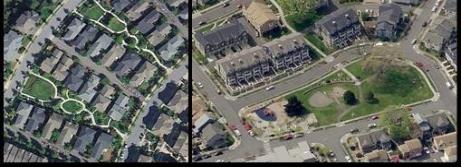
Figure 20 – Examples of appropriately scaled blocks that accommodate pedestrian connection no further apart than 300 feet
(4) Relationship Between Neighborhoods. “Gated communities” and other developments designed to appear as continuous walled-off areas disconnected and isolated from the rest of the community are prohibited. While privacy fences separating rear yards between homes are desirable for privacy, tall fences that back up to streets, reduce the number of “eyes on the street,” and make such streets feel less safe and welcoming are prohibited. New subdivisions should consider ways to integrate into the community rather than walling them off.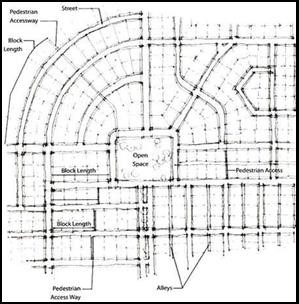
Figure 21 – Examples of well connected street network. Note that the “block lengths” show how street and pedestrian intervals are measured
(Ord. 3265 § 3 (Exh. A), 2023).
22C.065.140 Service areas and mechanical equipment.
(1) Service Element Location and Design. All development shall provide a designated spot for service elements. Such elements shall meet the following requirements:
(a) Service areas (trash dumpsters, compactors, recycling areas, electrical panels, and mechanical equipment areas) shall be located to avoid negative visual, auditory (noise), olfactory, or physical impacts on the street environment and adjacent residentially zoned properties. The city may require evidence that such elements will not significantly impact neighboring properties or public areas. (For example, the city may require noise damping specifications for fans near residential zones.)
(b) Service areas must not be visible from the sidewalk and adjacent properties. Where the city finds that the only option for locating a service area is either visible from a public right-of-way or space or from an adjacent property, the area must be screened with either landscape or structural screening measures provided in Chapter 22C.120 MMC, Landscaping and Screening.
(c) The designated spot for service elements shall be paved with concrete.
(d) Appropriate enclosure of the common trash and recycling elements shall be required, as determined by the director. Requirements and considerations:
(i) A six-foot fence constructed of concrete block or brick enclosing trash and recycling receptacles is required. Coordination with the current franchise hauler is required. The sides and rear of the enclosure must be screened with L1, L2, L3, or L4 landscaping (as defined in MMC 22C.120.110) at least five feet deep in visible locations as determined by the director to soften the views of the screening element and add visual interest.
(ii) Proximity to adjacent residential units will be a key factor in determining appropriate service element treatment.
(iii) Preferably, service enclosures are integrated into the building itself.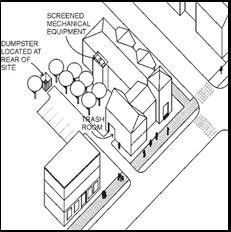
Figure 22 – Locate service elements to reduce impacts on the residential and pedestrian environment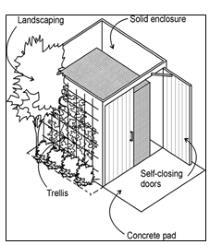
Figure 23 – Trash receptacle and recyclables screening example
(2) Utility Meters, Electrical Conduit, and Other Service Utility Apparatus. These elements shall be located and/or designed to minimize their visibility to the public. If such elements are mounted in a location visible from the street, pedestrian pathway, common open space, or shared auto courtyards, they shall be screened with vegetation or by architectural features.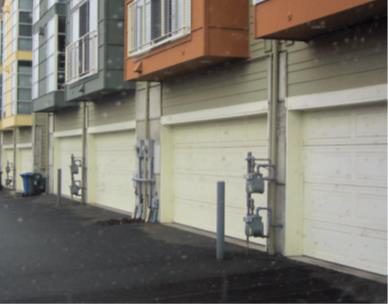
Figure 24 – Exposed utility meters like this will not be allowed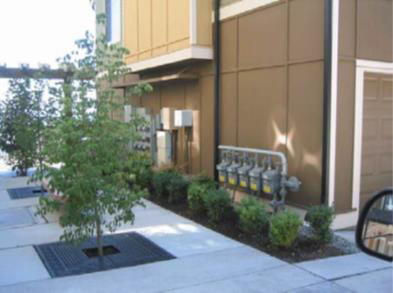
Figure 25 – Landscaping helps to minimize the negative visual impacts of utility meters
(3) Roof-mounted mechanical equipment must be located and screened by a parapet, or other primary building element, so the equipment is not visible within 150 feet of the structure when viewed from the ground level of adjacent properties. Match the color of roof-mounted equipment with the exposed color of the roof to minimize visual impacts when equipment is visible from higher elevations nearby.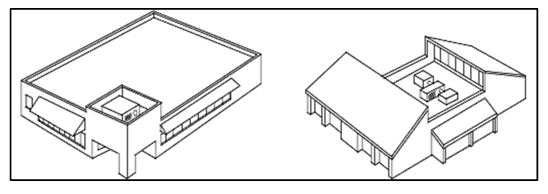
Figure 26 – Examples of how to screen roof-mounted mechanical equipment
(4) Locate and/or shield noise producing mechanical equipment such as fans, heat pumps, etc., so that noise reaching the adjacent properties is less than 50 dBA. If required by the director, the applicant must demonstrate that this standard is achieved by providing equipment specifications and/or calculations of noise impacts. (Ord. 3265 § 3 (Exh. A), 2023).
22C.065.150 Nonconforming situations.
Existing developments that do not conform to the development standards of this chapter are subject to the standards of Chapter 22C.100 MMC, Nonconforming Situations. (Ord. 3265 § 3 (Exh. A), 2023).
22C.065.160 Parking and loading.
The standards pertaining to the required number of auto parking spaces, bicycle parking spaces, parking lot placement, parking lot setbacks and internal parking lot pedestrian connections are stated in Chapter 22C.130 MMC, Parking and Loading. (Ord. 3265 § 3 (Exh. A), 2023).
22C.065.170 Signs.
The sign standards are stated in Chapter 22C.160 MMC, Signs. (Ord. 3265 § 3 (Exh. A), 2023).
22C.065.180 Landscaping and screening.
Landscaping and screening standards are set forth in Chapter 22C.120 MMC, Landscaping and Screening. (Ord. 3265 § 3 (Exh. A), 2023).
22C.065.190 Planned residential developments.
Planned residential developments are subject to the standards set forth in Chapter 22G.080 MMC, Planned Residential Developments. (Ord. 3265 § 3 (Exh. A), 2023).
22C.065.200 Zero lot line development.
In any PRD, interior setbacks may be modified during subdivision or short subdivision review as set forth in MMC 22C.010.270. (Ord. 3265 § 3 (Exh. A), 2023).
22C.065.210 Cottage housing developments.
Cottage housing developments are allowed on residentially zoned properties in the Lakewood neighborhood master plan area subject to the standards set forth in MMC 22C.010.280. (Ord. 3265 § 3 (Exh. A), 2023).
Article III. Commercial, Mixed-Use and Public Institutional Standards and Design
22C.065.220 Site and building design standards.
(1) Applicability.
(a) Prior to submitting a building permit application, all development to which these standards apply shall be required to submit a site plan and elevations addressing the standards in this section for administrative review and approval by the community development director.
(b) The site and building design standards of this section apply to institutional and commercial development.
(2) Relationship and Orientation of Buildings to Site and Street Front.
(a) The site shall be planned to create an attractive street edge and accommodate pedestrian access. Examples of ways that a development meets the requirements of this provision are to:
(i) Define the street edge with buildings, landscaping or other features (see Figure 27).
(ii) Provide for building entrances that are visible from the street.
(iii) Provide a sidewalk at least six feet wide, or as approved by the city engineer, if there is not space in the public right-of-way.
(iv) Provide building entries that are accessed from the sidewalk. These access ways must be separated from the parking and drive aisles. If access traverses the parking lot, then it should be raised and/or clearly marked while accommodating green storm water infrastructure.
(b) The development shall create a well defined streetscape to allow for the safe movement of pedestrians. New development must provide sidewalks as identified in the Lakewood neighborhood master plan, or otherwise approved by the city engineer, and street trees, at least two-inch caliper with spacing averaging no more than 30 feet on center, as approved by the director.
(c) Commercial and mixed use buildings must be oriented towards at least one street. For sites that front multiple streets, commercial and mixed use buildings are encouraged to orient towards both streets; provided, that priority shall be given to pedestrian-oriented streets, and to streets that are more visible and/or provide a better opportunity for increased pedestrian activity.
(d) Commercial and mixed use building facades facing the street or parking lots must have transparent windows or door covering at least 75 percent of the ground floor facade between four to eight feet above the level of the sidewalk. Exceptions may be considered by the director; provided, that the proposed building configuration and design enhances the pedestrian environment.
(e) No parking spaces may be located between the building’s facade and any designated pedestrian-oriented street (as identified in the Lakewood neighborhood master plan), or when the building is not sited on a pedestrian-oriented street, located between the building’s facade and the primary public street (street from which primary access is obtained) unless it is not feasible due to parcel size, topography, environmental conditions, or other factors as determined by the director. Where the property fronts on more than one public street, this provision applies to only one street frontage.
(f) Parking lots may not be located on corner locations adjacent to public streets unless no feasible on-site alternative exists.
(g) For large commercial and mixed use sites (over two acres) that feature multiple buildings, developments shall configure buildings to create focal points for pedestrian activity on the site. However, no more than 50 percent of the street frontage may be occupied by vehicular access or parking. Exceptions: An increased percentage of parking or vehicular access along the street front may be allowed where the configuration allows the development to better meet the intent of these standards. For example, if the configuration allows for a centralized plaza surrounded by a concentration of retail uses, an increase in the percentage of parking along the street front would be allowed. Exceptions are subject to approval by the director.
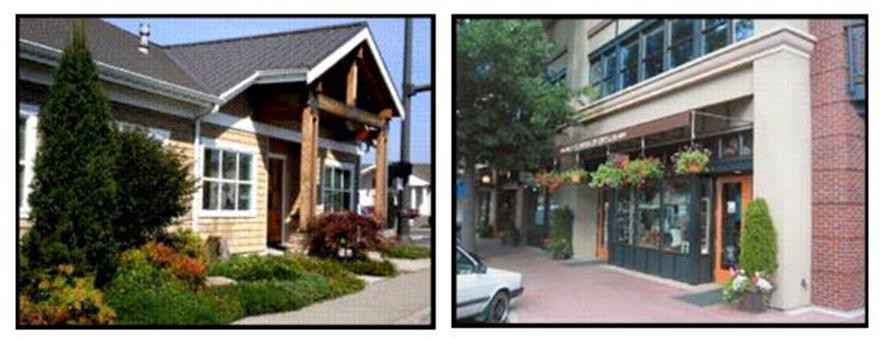
Figure 27 – Examples of building that provide a well defined streetscape
(h) Pedestrian Circulation Where Facades Face Parking Areas. Building entrances must face the street in the MU zones and on designated pedestrian-oriented streets. In the GC and CB zones where a building’s main commercial entrance faces onto a parking area rather than the street, provide wide pathways adjacent to the facades of retail and mixed-use buildings. Pathways along the front facade of mixed-use and retail buildings 100 feet or more in length (measured along the facade) that are not located adjacent to a street must be at least 12 feet wide with eight feet minimum unobstructed width and include the following:
(i) Trees, as approved by the director, must be placed at an average of 30 feet on center and placed in grates. Breaks in the tree coverage will be allowed near major building entries to enhance visibility. However, no less than one tree per 60 lineal feet of building facade must be provided.
(ii) Street tree pits may be included in a planting strip, provided the strip does not impede pedestrian movement and has at least eight feet of clearance.
(iii) If the pits are not in a planted strip, tree grates shall be provided at each pit and at least 24 square feet of pavers or porous pavements situated around the pits to allow air and water into the tree root space (see subsection (4)(b) of this section related to planting strips).
(iv) Lighting must conform to subsection (3)(d) of this section.
(i) Pedestrian-Oriented Facades.
(i) Commercial and mixed use buildings facing pedestrian-oriented streets indicated in Figure 17 of the Lakewood neighborhood master plan shall front directly on the back of sidewalk or a pedestrian-oriented space adjacent to the sidewalk and adhere to the following standards:
(A) Ground floor facades shall feature transparent window areas over at least 75 percent of the ground floor facade between two feet and eight feet above grade. The windows may look into the building’s interior or be configured as merchandise display windows. The building must be designed so that the windows satisfying the requirement for “pedestrian-oriented facades” do not look into service or storage areas or other unsightly rooms.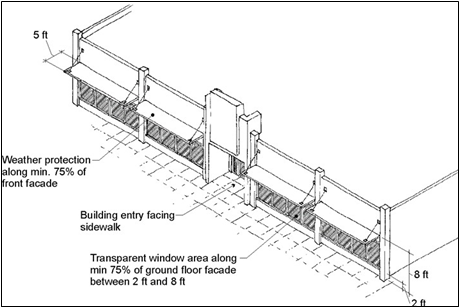
Figure 28 – An example of a pedestrian-oriented facade
(B) A primary building entry facing the streetfront. (See subsection (2)(j) of this section for entry enhancement requirements.)
(C) Weather protection at least five feet wide over at least 65 percent of the front facade.
(j) Pedestrian Weather Protection. In addition to weather protection along pedestrian-oriented facades, provide pedestrian weather protection in the front of commercial and mixed-use buildings fronting on parking areas serving that building, public spaces such as transit stops, building entries, along display windows, specifically:
(i) Weather protection at least six feet deep is required over the entries of all primary building, individual business, and individual residence. This may include a recessed entry, canopy, porch, marquee, or building overhang.
(ii) Canopies, awnings, or other similar weather protection features shall not be higher than 15 feet above the ground elevation at the highest point or lower than eight feet at the lowest point.
(iii) The color, material, and configuration of the pedestrian coverings shall be as approved by the director. Coverings with visible corrugated metal or corrugated fiberglass are not permitted unless approved by the director. Fabric and rigid metal awnings are acceptable.
(iv) Multitenant retail buildings are encouraged to use a variety of weather protection features to emphasize individual storefronts and reduce the architectural scale of the building. Figure 31 provides unacceptable and better examples.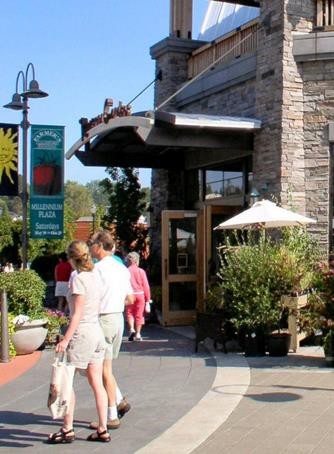
Figure 29 – Provide weather protection over building entries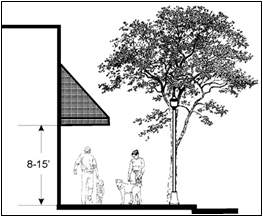
Figure 30 – Height standards for weather protection features
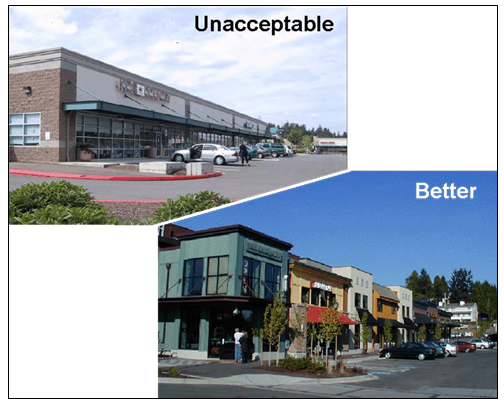
Figure 31 – The continuous canopy on top is monotonous and deemphasizes individual storefronts. The bottom example provides a variety of weather protection features and represents a more desirable example.
(3) Relationship of Buildings and Site to Adjoining Area. The development of new buildings should address impacts to neighborhood condition by complying to the following:
(a) Attractive landscape transition to adjoining properties shall be provided as directed by the director.
(b) Solar access of the subject and adjacent properties should be considered in building design and location. The director may require adjustments of the proposed site layout or special screening measures to accomplish this objective.
(4) Landscape and Site Treatment.
(a) Parking lot screening and interior landscaping shall be provided consistent with Chapter 22C.120 MMC. The following criteria shall guide review of plans and administration of the landscaping standards in the zoning code:
(i) The landscape plan shall demonstrate visual screening from parking areas.
(ii) The landscape plan shall provide some physical separation between vehicular and pedestrian traffic.
(iii) Where feasible, the landscape plan shall integrate natural approaches to storm water management, including featured low impact development techniques.
(iv) In locations where plants will be susceptible to injury by pedestrian or motor traffic, they shall be protected by appropriate curbs, tree guards or other devices.
(v) Screening of outdoor service yards and other places which tend to be unsightly shall be accomplished by use of walls, fencing, planting, berms or combinations of these.
(vi) Landscaping should be designed to create definition between public and private spaces.
(vii) Where feasible, the landscape plan shall coordinate the selection of plant material to provide a succession of blooms, seasonal color, and a variety of textures.
(viii) The landscape plan shall provide a transition in landscaping design between adjacent sites, within a site, and from native vegetation areas in order to achieve greater continuity.
(ix) The landscape plan shall use plantings to highlight significant site features and to define the function of the site, including parking, circulation, entries, and open spaces.
(b) Street Landscaping. Where the site plan includes streetscape plantings, the following guidelines apply:
(i) Sidewalks and pathways should be separated from the roadway by planting strips with street trees wherever possible. Where there is on-street parking, provide an 18-inch-wide strip of pavement directly on the back of the curb to accommodate entry and exit from parked cars.
(ii) Planting strips should generally be at least five feet in width. Evergreen shrubs should be no more than four feet in height and/or ground cover in accordance with the city of Marysville landscape standards (Chapter 22C.120 MMC) and Marysville administrative landscaping guidelines.
(iii) Street trees placed in tree grates may be more desirable than planting strips in pedestrian areas where space is limited. Tree pits or planting areas that provide water for roots shall be at least 24 square feet in area.
(iv) Use of trees and other plantings with special qualities (e.g., spring flowers and/or good fall color) is strongly encouraged.
(v) Unless otherwise directed by the director, plant at least one street tree per 30 linear feet of street front.
(c) Plaza/Pedestrian Area Landscaping Within Shopping Centers and Mixed Use Site Plans.
(i) A range of landscape materials – trees, evergreen shrubs, ground covers, and seasonal flowers – shall be provided for color and visual interest.
(ii) Planters or large pots with small shrubs and seasonal flowers may be used to create protected areas within the plaza for sitting and people watching.
(iii) Creative use of plant materials, such as climbing vines or trellises, and use of sculpture groupings or similar treatments, is encouraged.
(iv) All landscaping plans shall be submitted during site plan review for approval.
(v) Also see MMC 22C.065.250, Nonresidential open space requirements.
(d) Exterior lighting shall be part of the architectural concept. Lighting shall enhance the building design and adjoining landscaping. Appropriate lighting levels shall be provided in all areas used by pedestrians or automobiles, including building entries, walkways, parking areas, circulation areas, and other open space areas, in order to ensure safety and security; enhance and encourage evening activities; and provide a distinctive character to the area. New developments shall provide a lighting site plan which identifies lighting equipment, locations and standards, and implements the following design standards:
(i) All public areas shall be lighted with average minimum and maximum levels as follows:
(A) Minimum (for low or nonpedestrian and vehicular traffic areas) of one-half foot candle;
(B) Moderate (for moderate or high volume pedestrian areas) of one to two foot candles; and
(C) Maximum (for high volume pedestrian areas and building entries) of four foot candles.
(ii) Lighting shall be provided at consistent levels, with gradual transitions between maximum and minimum levels of lighting and between lit areas and unlit areas. Highly contrasting pools of light and dark areas shall be avoided.
(iii) Parking lot lighting shall be subject to the provisions set forth in MMC 22C.130.050(3)(d).
(iv) Pedestrian-scale lighting (light fixtures no taller than 15 feet) is encouraged in areas with high anticipated pedestrian activity. All fixtures over 15 feet in height shall be fitted with a full cut-off shield, be dark sky rated, and mounted no more than 25 feet above the ground with lower fixtures preferable so as to maintain a human scale. Lighting shall enable pedestrians to identify a face 45 feet away in order to promote safety.
(v) Light levels at the property line should not exceed 0.1 foot candles (fc) adjacent to business properties, and 0.05 foot candles adjacent to residential properties.
All building lights shall be directed onto the building itself and/or the ground immediately adjacent to it. The light emissions should not be visible above the roofline of the building. Light fixtures other than traditional cobra heads are encouraged.
(vi) Limited accent lighting on trees and provisions for seasonal lighting is acceptable.
(vii) Limited accent lighting on architectural and landscape features is encouraged to add interest and focal points.
Also see MMC 22C.065.250, Nonresidential open space requirements.
(5) Site Design Utilizing Crime Prevention Through Environmental Design (CPTED) Principles. Development that is subject to this section shall incorporate the following CPTED strategies into building design and site layout:
(a) Access Control. Guidance of people coming and going from a building or site by placement of real and perceived barriers. Provision of natural access control limits access and increases natural surveillance to restrict criminal intrusion, especially into areas that are not readily observable.
(b) Surveillance. Placement of features, uses, activities, and people to maximize visibility. Provision of natural surveillance helps to create environments where there is plenty of opportunity for people engaged in their normal behavior to observe the space around them.
(c) Territoriality/Ownership. Delineation of private space from semi-public and public spaces that creates a sense of ownership. Techniques that reduce the perception of areas as “ownerless” and therefore available for undesirable uses.
Examples of ways in which a proposal can comply with CPTED principles are outlined in the CPTED Guidelines for Project Design and Review, prepared by the city.
(6) Building Design – Human-Scale Standards. The human-scale standards are intended to encourage the use of building components that relate to the size of the human body and to add visual interest to buildings. “Human scale” addresses the relationship between a building and the human body. Generally, buildings attain a good human scale when they feature elements or characteristics that are sized to fit human activities, such as doors, porches, and balconies. A minimum of four of the following human-scale building elements shall be incorporated into the new development:
(a) Balconies in upper stories, at least one balcony per upper floor on the facades facing streets, provided they are integrated into the architecture of the building;
(b) Bay windows or other window treatments that extend out from the building face;
(c) At least 150 square feet of pedestrian-oriented space for each 100 lineal feet of building facade;
(d) Upper floor individual windows, generally less than 32 square feet per pane and separated from the windows by at least a six-inch molding;
(e) Spatially defining building elements, such as a trellis, overhang, canopy, or other element, that define space that can be occupied by people;
(f) Ground floor brick facades;
(g) Smaller building elements near the entry of pedestrian-oriented street fronts of large buildings (see Figure 32);
(h) Special details near the entrance, such as downtown lighting, artworks, or special materials;
(i) The director may consider other methods to provide human-scale elements not specifically listed here. The proposed methods must satisfy the intent of these standards.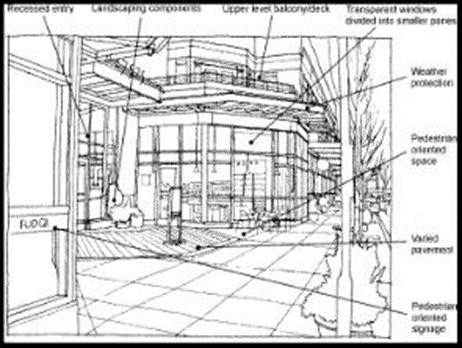
Figure 32 – Illustrating a variety of human- scale components on a building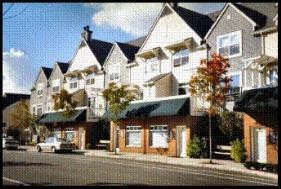
Figure 33 – Illustrating a variety of human-scale components on a building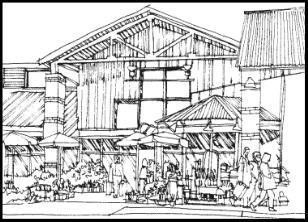
Figure 34 – Example of smaller building elements near the entry of large buildings
(7) Building Design – Architectural Scale. Note:
• Architectural scale is the perceived height and bulk of a building relative to that of neighboring buildings. A building has “good architectural scale” if its visual size is relatively similar to its neighbors.
• Modulation is a stepping back or projecting forward of portions of a building face, within specified intervals of building width and depth, as a means of breaking up the apparent bulk of a structure’s continuous exterior walls.
• Articulation is visually breaking up a building facade into intervals by including repetitive features, such as broken rooflines, chimneys, entrances, distinctive window patterns, street trees, and modulation.
(a) All new buildings over three stories or over 5,000 square feet in gross building footprint or with facades longer than 100 feet measured horizontally shall provide at least three modulation and/or articulation features as described below along any facade that is visible from a street, residential zone or pedestrian pathway. In addition, there must be an entry at least every 60 feet.
(b) Horizontal Building Modulation. The depth of the modulation must be at least two feet when tied to a change in the roofline and at least five feet in other situations. Balconies may be used to qualify for this option, provided they have a floor area of at least 40 square feet, are integrated with the architecture of the building, and project at least two feet from the building facade.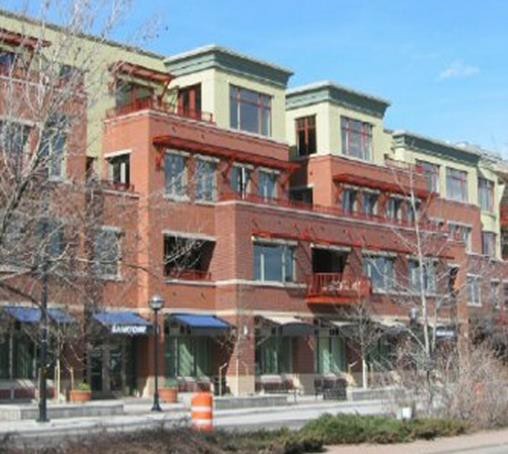
Figure 35 – Mixed-use building with modulation to increase its interest and human scale
(c) Modulated Roof Line. Buildings may qualify for this option by modulating the roof line of all facades visible from a street, park, or pedestrian pathway consistent with the following standards:
(i) For flat roofs or facades with a horizontal fascia or parapet, change the roofline so that no unmodulated segment of roof exceeds 60 feet. Minimum vertical dimension of roof line modulation is the greater of two feet or 0.1 multiplied by the wall height (finish grade to top of wall);
(ii) For gable, hipped, or shed roofs, a slope of at least three feet vertical to 12 feet horizontal; or
(iii) Other roof forms such as arched, vaulted, dormer, or saw-toothed may satisfy this design standard if the individual segments of the roof with no change in slope or discontinuity are less than 60 feet in width (measured horizontally).
(d) Repeating distinctive window patterns at intervals less than the articulation interval.
(e) Providing a porch, patio, deck, or covered entry for each articulation interval.
(f) Changing the roofline by alternating dormers, stepped roofs, gables, or changing roof textures on certain features such as metal roofs on towers and dormers to reinforce the modulation or articulation interval.
(g) Changing materials with a change in building plane.
(h) Providing lighting fixtures, trellises, trees, or other landscape feature within each interval.
(i) The director may increase or decrease the 60-foot interval for modulation and articulation to better match surrounding structures or to implement an adopted subarea plan.
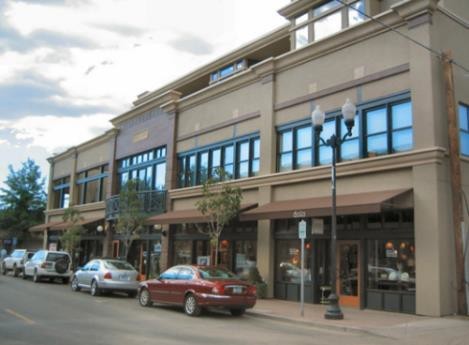
Figure 36 – Example of well-articulated building. Note how awnings, window divisions, pilaster columns, and cornice line all serve to divide up the facade into smaller segments without disrupting the unity of the overall design.
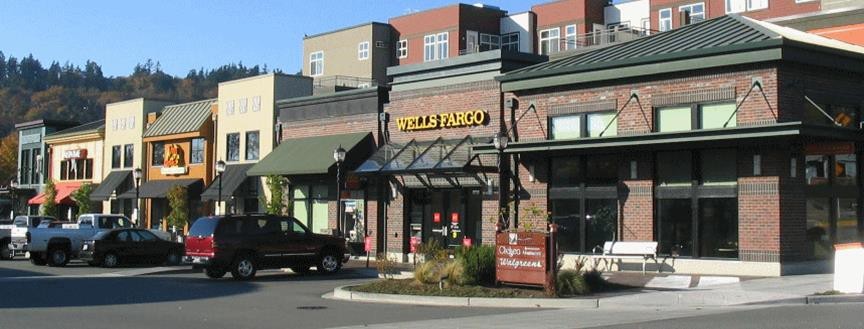
Figure 37 – This development uses a variety of roof forms, heights, and variations in roof textures by using metal hip roofs, different weather protection features, changing building materials and colors, and a modest amount of horizontal building modulation to reduce the overall architectural scale into smaller “storefront” components.
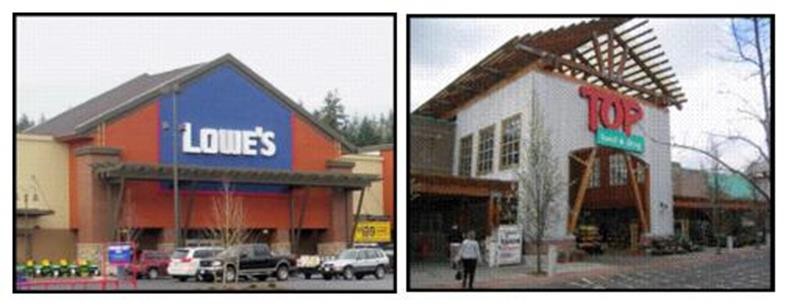
Figure 38 – Good examples of prominent pedestrian entries for large-scale retail uses; note height change, vertical modulation, use of building materials, colors, and detailing to add interest and emphasis
(8) Building Corners. The building corners standards are intended to architecturally accentuate building corners at street intersections, to create visual interest, and to increase activity, where appropriate. All new buildings located within 15 feet of a property line at the intersection of streets are required to employ one or more of the following design elements or treatments to the building corner facing the intersection:
(a) Provide at least 100 square feet of pedestrian-oriented space between the street corner and the building(s). To qualify for this option, the building(s) must have direct access to the space;
(b) Provide a corner entrance to building lobby, atrium, pedestrian pathway, or interior court.
(c) Include a corner architectural element such as:
(i) Bay window or turret.
(ii) Roof deck or balconies on upper stories.
(iii) Building corner setback “notch” or curved facade surfaces.
(iv) Sculpture or artwork, either bas-relief, figurative, or distinctive use of materials.
(v) Change of materials.
(vi) Corner windows.
(vii) Special lighting.
(d) Special treatment of the pedestrian weather protection canopy at the corner of the building; and/or
(e) Other similar treatment or element approved by the director.
(f) Parking lots are not allowed directly fronting the intersection of two streets.
The director may allow exceptions where no other site configuration is possible.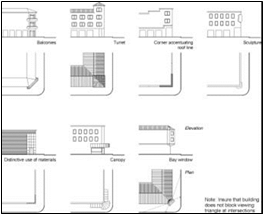
Figure 39 – Corner building treatment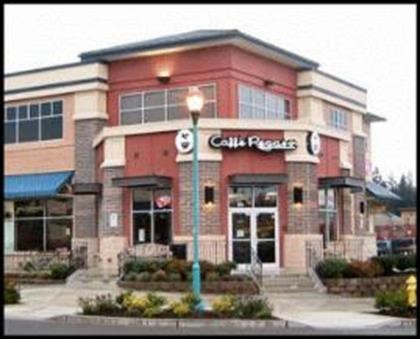
Figure 40 – Decorative use of windows, change of materials, and special lighting create a statement at this corner location
(9) Building Design Details. The building design details standards are intended to ensure that buildings have design interest at all observable distances; to enhance the character and identity of the city; and to encourage creative design. At closer distances, the most important aspects of a building are its design details, texture of materials, quality of its finishes, and small, decorative elements. All new commercial buildings and individual storefronts shall include at least one detail element from each of the three categories below. Other mixtures of detail elements will be considered provided they meet the intent of these standards. The applicant must demonstrate how the amount, type, and mix of details meet the intent of these standards. For example, a large building with multiple storefronts will likely need more than one decorative sign, transom window, and decorative kickplate to meet the intent of these standards.
Building details used to meet this standard may also be used to satisfy other applicable requirements, such as for subsection (6) of this section, Building Design – Human Scale Standards.
(a) Window and/or Entry Treatment. Special treatment of windows and doors, other than standard metal molding/framing details, around all ground floor windows and doors, decorative glazing, or door designs.
(i) Display windows divided into a grid of multiple panes.
(ii) Transom windows.
(iii) Roll-up windows/doors.
(iv) Other distinctive window treatment that meets the intent of the standards and guidelines.
(v) Recessed entry.
(vi) Distinctive door.
(vii) Arcade.
(viii) Landscaped trellises or other decorative element that incorporates landscaping near the building entry.
(ix) Other decorative entry treatment that meets the intent of these standards.
(b) Distinct Facade Attachments.
(i) Weather protection element such as a steel canopy, decorative cloth awning, or retractable awning.
(ii) Custom hanging, sculptural, or hand-crafted sign(s).
(iii) Building-mounted light fixtures with a diffuse visible light source or unusual fixture.
(iv) Special railings, grill work, or landscape guards.
(c) Building Materials and Other Facade Elements.
(i) Use of distinctive building materials such as decorative masonry, shingle, tile, brick, or stone.
(ii) Individualized patterns or continuous wood details, such as fancy butt shingles (a shingle with the butt end machined in some pattern, typically to form geometric designs), decorative moldings, brackets, trim or lattice work, ceramic tile, stone, glass block, carrera glass, or similar materials. The applicant must submit architectural drawings and material samples for approval.
(iii) Varied rooflines, such as an ornamental molding, entablature, frieze, or other roofline device visible from the ground level. If the roofline decoration is in the form of a linear molding or board, then the molding or board must be at least eight inches wide.
(iv) Artwork on the building such as a mosaic mural, bas-relief sculpture, light sculpture, water sculpture, or other similar artwork. Painted murals or graphics on signs or awnings do not qualify.
(v) Kickplate, pier, belt course, or other similar facade element.
(vi) Special building elements, such as pilasters, entablatures, wainscots, canopies, or marquees, that exhibit nonstandard designs.
(vii) Other details that meet the intent of the standards and guidelines as determined by the director.
(viii) Elements referenced above must be distinct “one-of-a-kind” elements or unusual designs that require a high level of craftsmanship as determined by the director.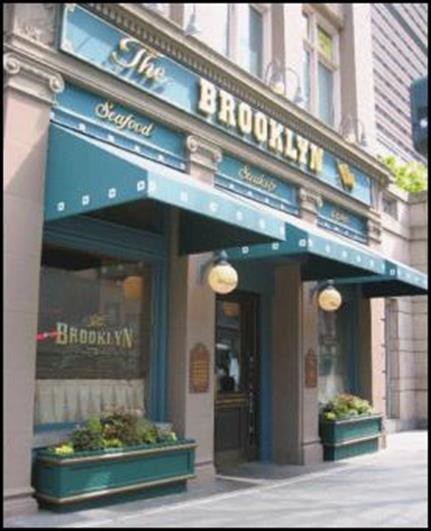
Figure 41 – The building provides a number of details that enhance the pedestrian environment, including decorative lighting, planter boxes, decorative awnings, historical plaques, and decorative facade elements
(10) Building Materials. The building materials standards are intended to encourage the use of a variety of high-quality, durable materials that will enhance the visual image of the city; provide visual interest and distinct design qualities; and promote compatibility and improvement within surrounding neighborhoods through effective architectural detailing and the use of traditional building techniques and materials. The following standards apply:
(a) Building exteriors shall be constructed from high-quality, durable materials. Building materials such as concrete, masonry, tile, stone and wood are encouraged.
(b) Metal siding, when used for walls that are visible from a public street, public park or open space, pathway, or pedestrian route must:
(i) Have visible corner moldings and trim and incorporate masonry, stone, or other durable permanent materials within two feet of the ground level;
(ii) Incorporate multiple siding materials or facade articulation (see subsection (7) of this section, Building Design – Architectural Scale) when the facade is wider than 40 feet;
(iii) Alternative standards may be approved by the director; provided, that the design quality and permanence meet the intent of this section.
(c) Concrete masonry units (CMU) or cinder block walls, when used for walls that are visible from a street, public park or open space, or pedestrian route, shall be architecturally treated in one or more of the following ways:
(i) Use in conjunction with other permitted exterior materials.
(ii) Use of a combination of textured surfaces such as split face or grooved to create distinct banding or other design.
(iii) Use of other masonry types, such as brick, glass block, or tile, in conjunction with concrete blocks.
(iv) Use of decorative coursing to break up blank wall areas.
(v) Use of matching colored mortar where color is an element of architectural treatment for any of the options above.
(vi) Other treatment approved by the director.
(d) Exterior insulation and finish system (EIFS) and similar troweled finishes must:
(i) Be trimmed in wood or masonry, and should be sheltered from extreme weather by roof overhangs or other methods in order to avoid deterioration. Weather-exposed horizontal surfaces must be avoided.
(ii) Be limited to no more than 50 percent of the facade area.
(iii) Incorporate masonry, stone, or other durable material for the first two feet above ground level.
(e) Prohibited materials in visible locations unless an exception is granted by the director based on the integration of the material into the overall design of the structure:
(i) Highly tinted or mirrored glass (except stained glass) covering more than 10 percent of the exterior of any building, or located at the ground level along the street.
(ii) Corrugated fiberglass.
(iii) Plywood siding, including T-111 and similar siding. Board and batten is an exception.
(iv) Noncorrugated and highly reflective sheet metal.
(v) Any sheet materials, such as wood or metal siding, with exposed edges or unfinished edges, or made of nondurable materials as determined by the director.
(vi) Chain link fencing.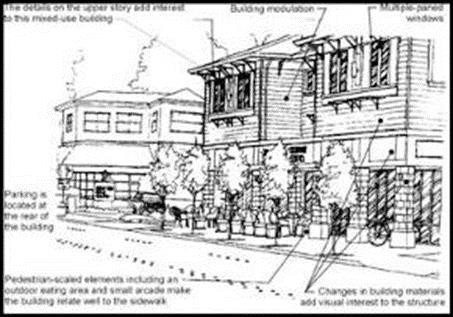
Figure 42 – The use of different building materials, window treatments, and roofline brackets add to the visual interest of this building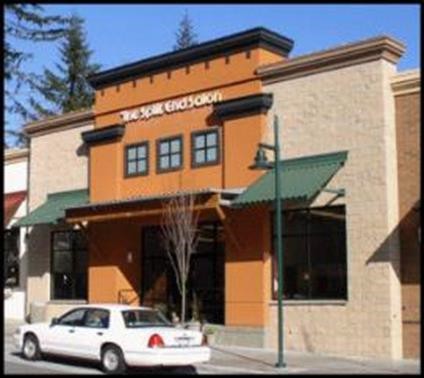
Figure 43 – This storefront effectively combines EIFS and concrete block with wood trim and metal detailing
(11) Blank Walls.
(a) The blank wall standards are intended to: reduce the visual impact of large, undifferentiated walls; reduce the apparent size of large walls through the use of various architectural and landscaping treatments; enhance the character and identity of the city; and ensure that all visible sides of buildings provide visual interest. Blank walls visible from a public street, sidewalk, trail, interior pathway, or parking lot are prohibited. A wall (including building facades and other exterior building walls, retaining walls, and fences) is defined as a blank wall if:
(i) A ground floor wall or portion of a ground floor wall over four feet in height has a horizontal length greater than 15 feet and does not include a transparent window or door; or
(ii) Any portion of a ground floor wall having a surface area of 400 square feet or greater does not include a transparent window or door.
(b) All blank walls visible from a public street, sidewalk, trail, interior pathway, or parking lot shall be treated in one or more of the following measures:
(i) Incorporate transparent windows or doors and/or display windows;
(ii) Install a vertical trellis in front of the wall with climbing vines or plant materials sufficient to obscure or screen at least 60 percent of the wall’s surface within three years. For large blank wall areas, the trellis must be used in conjunction with other treatments described below;
(iii) Provide a landscaped planting bed at least five feet wide or a raised planter bed at least two feet high and three feet wide in front of the wall. Plant materials must be able to obscure or screen at least 60 percent of the wall’s surface within three years;
(iv) Provide artwork (mosaic, mural, sculpture, relief, etc.) over at least 50 percent of the blank wall surface; and/or
(v) Other method as approved by the director. For example, landscaping or other treatments may not be necessary on a wall that employs high-quality building materials (such as brick) and provides desirable visual interest.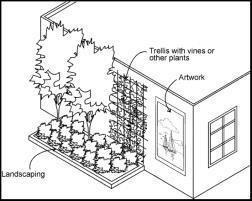
Figure 44 – Blank wall treatments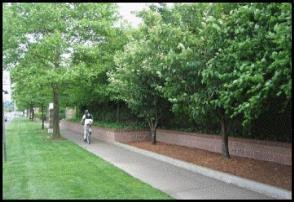
Figure 45 – Terraced planting beds effectively screen a large blank wall
(12) Building Entrances. The intent of the building entrances standards is to ensure that buildings are inviting and accessible, that entrances are easy to locate, and that pedestrian activity is encouraged.
(a) Primary Building Entrances. The principal building entrances of all buildings shall feature the following improvements, unless the director determines an alternate solution better addresses the guideline’s intent:
(i) Weather Protection. Weather protection at least five feet deep and at least eight feet above ground level is required over the primary entrance to all commercial buildings. Entries may satisfy this requirement by being set back into the building facade.
(ii) Lighting. Pedestrian entrances must be lit to at least three foot candles but not more than four foot candles as measured on the ground plane for commercial buildings.
(iii) Visibility and Accessibility. Building entrances must be prominent and visible from the surrounding streets and must be connected by a walkway to the public sidewalk. Pedestrian pathways from public sidewalks to primary entrances or from parking lots to primary entrances shall be accessible, conforming to federal and state Americans with Disabilities Act requirements, and shall be clearly delineated.
(iv) Transparency. Entries must feature glass doors, windows, or glazing (window area) near the door so that the visitor and occupant can view people opening the door from the other side.
(b) Secondary Public Access for Commercial Buildings. Buildings with “secondary” entrances off of a parking lot shall comply with the following measures to enhance secondary public access (applies only to entries used by the public):
(i) Weather protection at least three feet deep and at least eight feet above the ground is required over each secondary entry.
(ii) Two or more of the design elements must be incorporated within or adjacent to the secondary entry:
(A) A transparent window or door to allow visibility into the building;
(B) A landscape bed, trellis, or other permanent landscape element adjacent to the entry;
(C) Architectural treatments that add visual interest to the entry;
(D) Outdoor dining or pedestrian-oriented space;
(E) Decorative lighting; or
(F) Other design elements that meet the intent of these standards as determined by the director.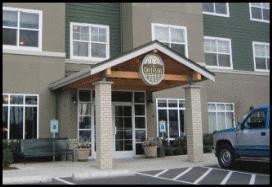
Figure 46 – A distinct, weather-protected primary building entrance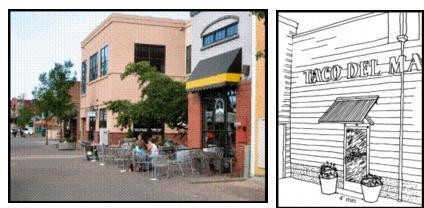
Figure 47 – Examples of secondary public entrances. Note the planters, signage, and awnings
(Ord. 3265 § 3 (Exh. A), 2023).
22C.065.230 Commercial, multiple-family, townhome, and group residences – Vehicular access and parking location.
Commercial, apartment, townhome and all group residence developments shall comply with the vehicular access and parking location standards set forth in MMC 22C.020.260. (Ord. 3265 § 3 (Exh. A), 2023).
22C.065.240 Additional design standards for gas stations, convenience stores, car washes and similar uses.
Gas stations, convenience stores, car washes and similar uses are subject to the design standards set forth in MMC 22C.020.265. (Ord. 3265 § 3 (Exh. A), 2023).
22C.065.250 Nonresidential open space requirements.
(1) New developments with nonresidential uses on sites with a total site area greater than one acre must provide “pedestrian-oriented open space” equal to at least one percent of the ground floor nonresidential building footprint plus one percent of the “site area.” The open space may be in the form of “pedestrian-oriented open space” (see subsection (2)(b) of this section), garden, play area or other open space feature that serves both as a visual amenity and a place for human activity. Portions of sidewalks that are wider than 12 feet and which meet the standards of pedestrian-oriented open space may be counted toward this requirement. For this specific guideline, “site area” includes all land needed for the nonresidential portion of the project including parking, service areas, access and required landscaping. The intent of this guideline is to provide for some outdoor space for activities or amenities that enhance the commercial activities, such as outdoor eating areas, display areas, seating, etc.
(2) Pedestrian-Oriented Open Space. Where “pedestrian-oriented open space” is provided, including but not limited to areas required in these standards, design the open space according to the following criteria. If sidewalks are wider than the required minimum width, the additional sidewalk width may be counted as pedestrian-oriented open space.
(a) Required Pedestrian-Oriented Open Space Features.
(i) Visual and pedestrian access (including ADA-compliant access) into the site from a street, private access road, or nonvehicular courtyard.
(ii) Paved walking surfaces of either concrete or approved unit paving.
(iii) Lighting must conform to these design standards.
(iv) Spaces must be located in or adjacent to areas with significant pedestrian traffic to provide interest and security, such as adjacent to or visible from a building entry.
(v) Landscaping components that add visual interest and do not act as a visual barrier. This could include planting beds, potted plants, or both.
(b) Desirable Pedestrian-Oriented Open Space Features.
(i) Pedestrian amenities, such as a water feature, site furniture, artwork, drinking fountains, kiosks, or other similar features.
(ii) At least two feet of seating area (a bench or ledge at least 16 inches deep and appropriate seating height) or one individual seat per 60 square feet of plaza area or open space.
(iii) Adjacent buildings with transparent window and doors covering 75 percent of the facade between two feet and eight feet above the ground level.
(iv) Consideration of the sun angle at noon in the design of the space.
(v) Pedestrian weather protection, alcoves, seating, or other features along building edges to allow for outdoor seating areas and a planted buffer.
(c) A pedestrian-oriented open space must not have:
(i) Asphalt or gravel pavement.
(ii) Adjacent parking areas or service areas (e.g., trash areas) that are not separated with landscaping.
(iii) Adjacent chain-link fences.
(iv) Adjacent “blank walls” without “blank wall treatment.”
(v) Outdoor storage that does not contribute to the pedestrian-oriented environment. (Ord. 3265 § 3 (Exh. A), 2023).
22C.065.260 Residential open space and recreation space required.
The on-site open space and recreation space standards are intended to provide usable, accessible, and inviting open space for residents that enhances residential areas. Multifamily residential uses in the mixed use zone shall provide open space equivalent to at least 20 percent of the building’s gross floor area; vertical mixed use developments (where commercial and multifamily uses are contained in the same building) shall not be subject to this requirement; provided, that at least 80 percent of the ground floor is exclusively dedicated to commercial uses and residential uses shall be limited to walls not oriented or located along the street. The required area may be satisfied with one or more of the elements listed below:
(1) Common open space accessible to all residents shall count for up to 100 percent of the required open space. This includes landscaped courtyards or decks, gardens with pathways, children’s play areas, or other multipurpose recreational and/or green spaces. Special requirements and recommendations for common spaces include the following:
(a) Space shall be large enough to provide functional leisure or recreational activity area per the director. For example, long narrow spaces less than 20 feet wide rarely, if ever, can function as usable common open space.
(b) Consider space as a focal point of development.
(c) Open space, particularly children’s play areas, shall be visible from dwelling units and positioned near pedestrian activity.
(d) Space shall feature paths, plantings, seating, lighting and other pedestrian amenities to make the area more functional and enjoyable.
(e) Individual entries shall be provided onto common open space from adjacent ground floor residential units. Small, semiprivate open spaces for adjacent ground floor units that maintain visual access to the common area are strongly encouraged to enliven the space.
(f) Separate common space from ground floor windows, streets, service areas and parking lots with landscaping and/or low-level fencing, where desirable.
(g) Space shall be oriented to receive sunlight, facing east, west, or (preferably) south, when possible.
(h) Required setbacks, landscaping, driveways, parking, or other vehicular use areas shall not be counted toward the common open space requirement.
(i) Rooftops or rooftop decks shall not be considered as common open space for the purpose of calculating minimum open space area; provided, that the director may consider rooftops or rooftop decks as common open space where usable open space amenities are provided and available to all residents.
(j) Outdoor open space shall not include areas devoted to parking or vehicular access.
(2) The following amenities may be used to satisfy up to 50 percent of the open space requirement. A combination of these amenities may be provided in different ratios; provided, that (i) the total credit for any combination of the following amenities may not exceed 50 percent of the open space requirement, and (ii) the amount of the amenity provided is sufficient to achieve the purpose of the amenity as determined by the director:
(a) Individual balconies that provide a space usable for human activity. To qualify, the balconies shall be at least 36 square feet and have no dimension less than six feet.
(b) Natural areas that function as an amenity to the development, subject to the following requirements and recommendations:
(i) The natural area shall be accessible to all residents. For example, safe and attractive trails provided along or through the natural area where they could serve as a major amenity to the development.
(ii) Steep slopes, wetlands, or similar unbuildable areas shall not be counted in the calculations for required open space unless they provide a visual amenity for all units, as determined by the director.
(c) Storm water retention areas if the facility has natural looking edges, natural vegetation, and no fencing except along the property line. The design of such areas shall go well beyond functional storm water requirements per the director in terms of the area involved and the quality of landscaping and resident amenities. The side slope of the storm water facilities shall not exceed a grade of 1:3 (one vertical to three horizontal) unless slopes are existing, natural, and covered with vegetation.
(3) Children’s play equipment and recreational activity space for children and/or teens that include parent seating areas are required in residential complexes with 20 or more units. Exceptions: age-restricted senior citizen housing; mixed use developments (combined commercial and residential in same building); developments reserved for student housing; infill lots within the downtown master plan area; and developments located within a quarter mile of safe walking distance to a public park that features a play area.
(4) Active recreation facilities may be provided, subject to the following:
(a) Active recreation facilities may include, but are not limited to, exercise rooms, sports courts, swimming pools, tennis courts, game rooms, or community centers; and
(b) Indoor recreation areas may be credited towards the total recreation space requirement, when the city determines that such areas are located, designed and improved in a manner which provides recreational opportunities functionally equivalent to those recreational opportunities available outdoors.
(5) Minimum Total Open Space. In addition to subsections (1) and (2) of this section, all multifamily development shall include at least 30 percent of the total lot area as landscaped open space. The landscaped open space shall not include any area used for vehicle circulation or parking, but may include residential open space areas, areas in required building setbacks, play areas, natural areas, and critical areas. (Ord. 3265 § 3 (Exh. A), 2023).
22C.065.270 Townhouse open space.
Townhouse and other ground-based multifamily shall provide open space as set forth in MMC 22C.020.280. (Ord. 3265 § 3 (Exh. A), 2023).
22C.065.280 Maintenance or dedication of open space.
Maintenance and dedication of open space standards are set forth in MMC 22C.010.340. (Ord. 3265 § 3 (Exh. A), 2023).
22C.065.290 On-site recreation – Fee in lieu of open space.
Provisions for the city allowing a payment in lieu of providing on-site open space or recreation space are set forth in MMC 22C.020.300. (Ord. 3265 § 3 (Exh. A), 2023).
22C.065.300 Service areas and mechanical equipment.
(1) Service Element Location and Design. All development shall provide a designated spot for service elements. Such elements shall meet the following requirements:
(a) Service areas (loading docks, trash dumpsters, compactors, recycling areas, electrical panels, and mechanical equipment areas) shall be located to avoid negative visual, auditory (noise), olfactory, or physical impacts on the street environment and adjacent residentially zoned properties. The city may require evidence that such elements will not significantly impact neighboring properties or public areas. (For example, the city may require noise damping specifications for fans near residential zones.)
(b) Exterior loading areas for commercial uses shall not be located within 20 feet of a single-family residentially zoned property, unless the director finds such a restriction does not allow feasible development. In such cases, the areas and drives will be separated from the residential lot by a masonry wall at least eight feet high. Internal service areas may be located across the street from a single family residential zone.
(c) Service areas must not be visible from the sidewalk and adjacent properties. Where the city finds that the only option for locating a service area is either visible from a public right-of-way or space or from an adjacent property, the area must be screened with either landscape or structural screening measures provided in Chapter 22C.120 MMC, Landscaping and Screening.
(d) The designated spot for service elements shall be paved with concrete.
(e) Appropriate enclosure of the common trash and recycling elements shall be required, as determined by the director. Requirements and considerations:
(i) A six-foot fence constructed of concrete block or brick enclosing trash and recycling receptacles is required. Coordination with the current franchise hauler is required. The sides and rear of the enclosure must be screened with L1, L2, L3, or L4 landscaping (as defined in MMC 22C.120.110) at least five feet deep in visible locations as determined by the director to soften the views of the screening element and add visual interest.
(ii) Proximity to adjacent residential units will be a key factor in determining appropriate service element treatment.
(iii) Preferably, service enclosures are integrated into the building itself.
(2) Utility Meters, Electrical Conduit, and Other Service Utility Apparatus. These elements shall be located and/or designed to minimize their visibility to the public. If such elements are mounted in a location visible from the street, pedestrian pathway, common open space, or shared auto courtyards, they shall be screened with vegetation or by architectural features.
(3) Roof-mounted mechanical equipment must be located and screened by a parapet, or other primary building element, so the equipment is not visible within 150 feet of the structure when viewed from the ground level of adjacent properties. Match the color of roof-mounted equipment with the exposed color of the roof to minimize visual impacts when equipment is visible from higher elevations nearby.
(4) Locate and/or shield noise-producing mechanical equipment such as fans, heat pumps, etc., so that noise reaching the adjacent properties is less than 50 dBA. If required by the director, the applicant must demonstrate that this standard is achieved by providing equipment specifications and/or calculations of noise impacts. (Ord. 3265 § 3 (Exh. A), 2023).
22C.065.310 Fences.
(1) Purpose. The fence standards promote the positive benefits of fences without negatively affecting the community or endangering public or vehicle safety. Fences provide separation from busy streets and sewer service areas, define vehicle areas, and enhance the appearance of property by providing attractive landscape materials. The negative effects of fences can include the creation of street walls that inhibit police and community surveillance, decrease the sense of community, hinder emergency access and the safe movement of pedestrians and vehicles, and create an unattractive appearance.
(2) Types of Fences.
(a) The standards apply to walls, fences, trellises, arbors and screens of all types whether open, solid, wood, metal, wire, masonry or other material.
(b) No barbed or razor-wire fence shall be permitted, except for the following:
(i) Industrial zones.
(ii) Confinement of livestock.
(iii) Public facilities, transmitter and transformer sites.
(iv) Government installations where security or public safety is required.
(v) Automobile holding yards and similar businesses if required under state law.
(3) Height.
(a) Business and Commercial Zones. All yards: eight feet.
(b) Industrial Zones. All yards: 10 feet.
(c) When a protective fence is located on top of a rockery, any portion of the fence above a height of eight feet shall be an open-work fence.
(d) Open wire mesh or similar type fences may be erected in excess of the maximum heights permitted in this code on the periphery of playgrounds associated with private and public schools and parks, public facilities, transmitter and transformer sites, and government installations where security or public safety is required.
(e) The height of a fence or freestanding wall, retaining wall or combination of the same shall be measured from its top surface, board, rail, or wire to the natural elevation of the ground on which it stands.
(f) Where the finished grade is a different elevation on either side of a fence, the height may be measured from the side having the highest elevation.
(4) Setbacks.
(a) Front Lot Line.
(i) Solid fences greater than four feet in height shall be set back at least 20 feet from the street right-of-way, unless they are used to screen service areas or unsightly areas.
(ii) No fence taller than four feet above grade shall be located between a street and a building’s front facade or entrance.
(b) Side lot line: No setback requirement.
(c) Rear lot line: No setback requirement.
(d) For special rules relating to fences and walls near fire hydrants, see MMC 14.03.050(2) and the International Fire Code.
(5) Fence Exemptions.
(a) The director shall have authority to administratively grant an exception to the fence requirements outlined in this section. The director is authorized to issue exceptions in cases of special hardships, unique circumstances and practical difficulties. No exception shall be granted which would be detrimental to the public health, welfare or environment.
(b) In considering a request for a modification of the fence requirements outlined in subsections (1) through (4) of this section, the community development director shall consider the following factors:
(i) If the proposed fence is designed and constructed so that it does not cause a public safety hazard by obstructing visibility of pedestrians or motorists using streets, driveways or sidewalks;
(ii) The proposed fence will not infringe upon or interfere with utility and/or access easements or covenant rights or responsibilities;
(iii) The increased fence height will not adversely affect adjacent property owners or reduce visibility of the property from the street. (Ord. 3265 § 3 (Exh. A), 2023).
22C.065.320 Special limitations in the business and commercial zones.
Where lighted signs and illuminated areas are permitted, such illuminating devices shall be shaded and/or directed so as not to visibly create a nuisance to any property in a residential zoning classification. (Ord. 3265 § 3 (Exh. A), 2023).
22C.065.330 Outdoor lighting.
(1) Site Lighting Levels. All publicly accessible areas shall be lighted with average minimum and maximum levels as follows:
(a) Minimum for low or nonpedestrian and vehicular traffic areas – one-half foot candle;
(b) Minimum for moderate or high volume pedestrian areas – one to two foot candles; and
(c) Maximum (for high volume pedestrian areas and building entries) – up to four foot candles.
(2) Light Quality and Shielding.
(a) Parking area lighting fixtures shall be full cut-off; dark sky rated and mounted no more than 20 feet about the ground, with lower fixtures preferable so as to maintain a human scale.
(b) Exterior lighting must comply with MMC 22C.065.220(4)(d).
(3) Architectural Lighting. The lighting of building features, artwork, and special landscape elements may be allowed, subject to the findings of the director that the light causes no significant adverse impact. (Ord. 3265 § 3 (Exh. A), 2023).
22C.065.340 Street connectivity.
The Lakewood neighborhood master plan places a high priority on being a “walkable” and accessible community. Frequent and attractive connections between destinations through a well connected system of streets and pathways are required.
(1) Connectivity to Abutting Lands. The street system of proposed development shall be designed to connect with existing, proposed, and planned streets outside of the development. Wherever a proposed development abuts unplatted land or other land with the capability of being further subdivided, street stubs shall be provided to allow access to future abutting subdivisions and to logically extend the street system into the surrounding area. All street stubs shall be provided with a temporary turn-around unless specifically exempted by the fire marshal, and the restoration and extension of the street shall be the responsibility of any future developer of the abutting land.
(2) Continuation of Streets. Planned streets shall connect with surrounding streets to permit the convenient movement of traffic between residential neighborhoods and to facilitate emergency access and evacuation. Connections shall be designed to meet or exceed the block standards in subsection (3) of this section, and to avoid or minimize through traffic on local streets.
(3) Block Size. New development in mixed-use zones shall provide an integrated and connected network of streets to provide “direct” walking route options, orientation, a sense of place, and multiple travel route options. A street network dominated by long, irregular loop roads and cul-de-sacs is not appropriate. Blocks shall be designed to provide vehicular connections at intervals no greater than 600 feet and pedestrian access at intervals no greater than 300 feet (200 feet is preferred).
(4) Pedestrian Access Ways. Internal paths, such as an access way in the middle of a block, are encouraged to provide pedestrian access at intervals no greater than 300 feet to improve pedestrian mobility. Such access ways shall conform to all of the following standards:
(a) Width. Pedestrian access ways shall be located within dedicated public rights-of-way or private easements allowing public access with a minimum dimension of 10 feet in width;
(b) Design. Pedestrian access ways shall be constructed to sidewalk standards for local access roads or be designed as a multi-use trail per direction in the nonmotorized transportation systems plans outlined in the Lakewood neighborhood master plan and 2015 Transportation Element of the Marysville comprehensive plan. Also see Chapter 3 of the city of Marysville engineering design and development standards (EDDS). Alternative designs may be considered where significant environmental constraints are present;
(c) Safety. The access way shall incorporate design treatments that avoid a “tunnel effect” in the corridor and create a potential safety problem. Design solutions could involve the width, length, and/or the alignment of the corridor, height of fences adjacent to the corridor, lighting treatments, and/or the proposed landscaping along the corridor;
(d) Accessibility. Pedestrian access ways shall conform to applicable ADA requirements, except where not required by applicable ADA rules and regulations;
(e) Landscaping. The city may require landscaping to buffer pedestrians from adjacent vehicles and land uses. Plantings shall emphasize drought tolerant and low maintenance materials and shall maintain adequate visibility for safety; and
(f) Where pedestrian access ways are privately owned, they shall be operated and maintained by the developer until: (i) the declaration and covenants for plat are recorded, and (ii) a property owners, business, or homeowners organization has been established which shall be legally responsible for the operation and maintenance of the pedestrian access way. (Ord. 3265 § 3 (Exh. A), 2023).
22C.065.350 Nonconforming situations.
Existing developments that do not conform to the development standards of this chapter are subject to the standards of Chapter 22C.100 MMC, Nonconforming Situations. (Ord. 3265 § 3 (Exh. A), 2023).
22C.065.360 Parking and loading.
The standards pertaining to the required number of auto parking spaces, bicycle parking spaces, parking lot placement, parking lot setbacks and internal parking lot pedestrian connections are stated in Chapter 22C.130 MMC, Parking and Loading. (Ord. 3265 § 3 (Exh. A), 2023).
22C.065.370 Signs.
The sign standards are stated in Chapter 22C.160 MMC, Signs. (Ord. 3265 § 3 (Exh. A), 2023).
22C.065.380 Landscaping and screening.
The landscaping and screening standards are stated in Chapter 22C.120 MMC, Landscaping and Screening. (Ord. 3265 § 3 (Exh. A), 2023).
Article IV. Decorative Street Lighting Standards
22C.065.390 Decorative street lighting standards.
(1) All decorative street light installations shall be Philips Lumec Renaissance Series color BRTX (textured bronze) or approved equal, and shall include the following, or latest model:
(a) Philips Lumec Renaissance Series fixture product number RN20-(90 or 135)W80LED-ACDR-LE3R-240-BRTX.
(b) Philips Lumec pole product number SSM8V-25-BRTX including pole, access door, plant support, decorative cover, ballast module, ballast tray, weld cover, base cover and GFCI receptacle.
(c) Philips Lumec Renaissance Series mounting arm product number NMIA-RNA-BRTX.
(d) Philips Lumec Renaissance Series pedestrian scale lighting may also be required and shall be determined based upon projects details specific to the location pedestrian sidewalk and/or multi-use path design. This product may include a standalone decorative pole with fixture or a decorative arm and fixture mounted on the decorative street light pole.
(2) Decorative street light standards shall be furnished and installed in accordance with the methods and materials noted in the applicable standard plans, preapproved plans, or special design plans. All welds shall comply with the latest AASHTO Standard Specifications for Support of Highway Signs, Luminaires, and Traffic Signals. Welding inspection shall comply with Section 6-03.3(25)A, Welding Inspection.
(3) All decorative street light standards shall meet the following:
(a) All poles and arms shall be round tapered steel.
(b) All lamps and electrical components shall be accessible without tools.
(c) Optical systems shall be IP66 rated.
(d) Luminaires shall incorporate LED lamps with an L70 rated LED lamp and driver life of 100,000 hours or greater.
(e) LED lamps shall have a color temperature of 4000K (+/- 350K).
(f) Decorative street light standards, luminaire arms, banner arms (if required), decorative bases, and visible mounting hardware shall be of the color BRTX (textured bronze) with a powder coating.
(g) Bolts shall be per manufacturer recommendation and installed per the plans and specifications.
(h) All poles shall have a hand hole for access to the tray-mounted ballasts.
(i) All standards shall be rated to withstand 100 MPH steady wind with a gust factor of 1.3.
(j) Bolt circle allowed shall be 11 inches at 13 inches.
(k) All poles and luminaire arms shall incorporate decorative elements identical to or similar to those shown within the plans.
(4) Every other (a minimum of 50 percent of installed) decorative street light standard shall meet the following:
(a) Have a 120-volt, built-in duplex GFCI receptacle outlet installed at the top of the pole. The GFCI receptacle outlet circuit shall be placed on a 20-amp minimum circuit. The GFCI receptacle outlets shall be inspected utilizing a standard off-the-shelf GFCI receptacle tester, prior to project completion, by the contractor in the presence of the city signal technician or city electrical inspector. GFCI outlets which fail the test shall be replaced by the contractor and retested by the contractor in the presence of the city signal technician or city electrical inspector.
(b) Have banner arms permanently mounted at a height of 20 feet and banner arms mounted to an adjustable clamp assembly at a height of 12 feet. Banner arms shall be 36 inches long and have a three-inch ball at the end.
(c) Banner arm mounts and duplex GFCI receptacle outlets shall be oriented 180 degrees from the steel arms of the luminaire.
(5) Decorative street light standards shall be engineered by the pole manufacturer. Drawings shall be stamped by a licensed structural engineer with current valid State of Washington stamp. The foundation shall be engineered by a licensed structural engineer using pole manufacture data and project supplied soils testing report. Engineered/stamped plans by a currently licensed structural engineer shall be submitted to the project engineer. Foundation work and pole manufacture shall not commence until engineered plans have been approved by the project engineer. All poles shall be circular in cross-section.
(6) After delivering the standards to the job site and before they are installed, they shall be stored in a place that will not inconvenience the public. All standards shall be installed in compliance with Washington State Utility and Electrical Codes.
(7) Factory approved touch-up paint of color BRTX (textured bronze) in the quantity of one unopened gallon shall be supplied to the city prior to project completion.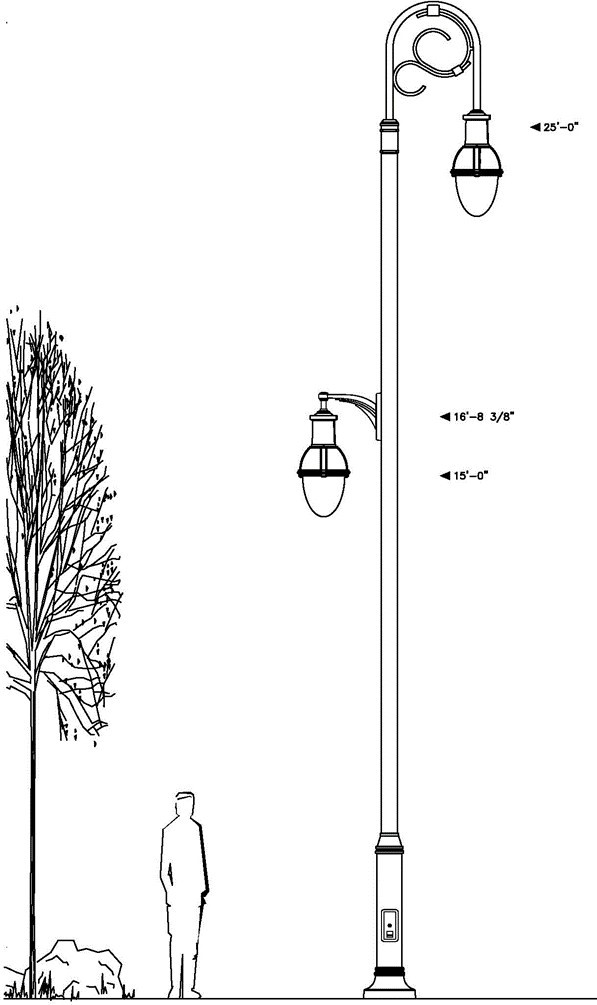
Figure 48 – Decorative street lighting required in the Lakewood neighborhood
(Ord. 3265 § 3 (Exh. A), 2023).


